WE WELCOMETHISYEAR'S CHICKSAT PENGUINSROCK



WE WELCOMETHISYEAR'S CHICKSAT PENGUINSROCK


This is the official publication for members of the Royal Zoological Society of Scotland (RZSS), the wildlife conservation charity (Scottish registered charity SC004064).
Your membership magazine and its envelope are made using paper from sustainably managed forests and are recyclable. For more information about RZSS,including details of our patrons, board and staff, visit rzss.org.uk
All content in this magazine is © RZSSunless stated otherwise.
For any editorial enquiries, please write to Membership, RZSS, 134 Corstorphine Road, Edinburgh EH12 6TS
Or email us at: membership@rzss.org.uk
Thanks to the support of players of People's Postcode Lottery
RZSSEditorial Team
Celia Brady, Allie McGregor, Christine Moorhouse, Lisa Robshaw, Ben Supple, Hollie Watson
Editor Emily Radway
Contributing Editor
Angela McManus
Art Director George Walker
Photographer Laurie Campbell
Managing Editor Andrew Littlefield
Production Director Justin Masters
Client Engagement Director
Rachel Walder
Executive Director John Innes
Commercial Partnerships Director
Sonal Mistry d: 020 3771 7247
e: sonal.mistry@thinkpublishing.co.uk
Published by T H I N K
w: wwwthinkpublishing.co.uk
We're looking forward to a busy season at Edinburgh Zoo and Highland Wildlife Park this summer. I'm sure you'll have visits planned to see the animals you love!
For this issue of your exclusive member magazine, some of our expert staff have offered their favourite tips to make the most of your days out -and don't forget to check our website to make sure you are aware of all your benefits as a member.
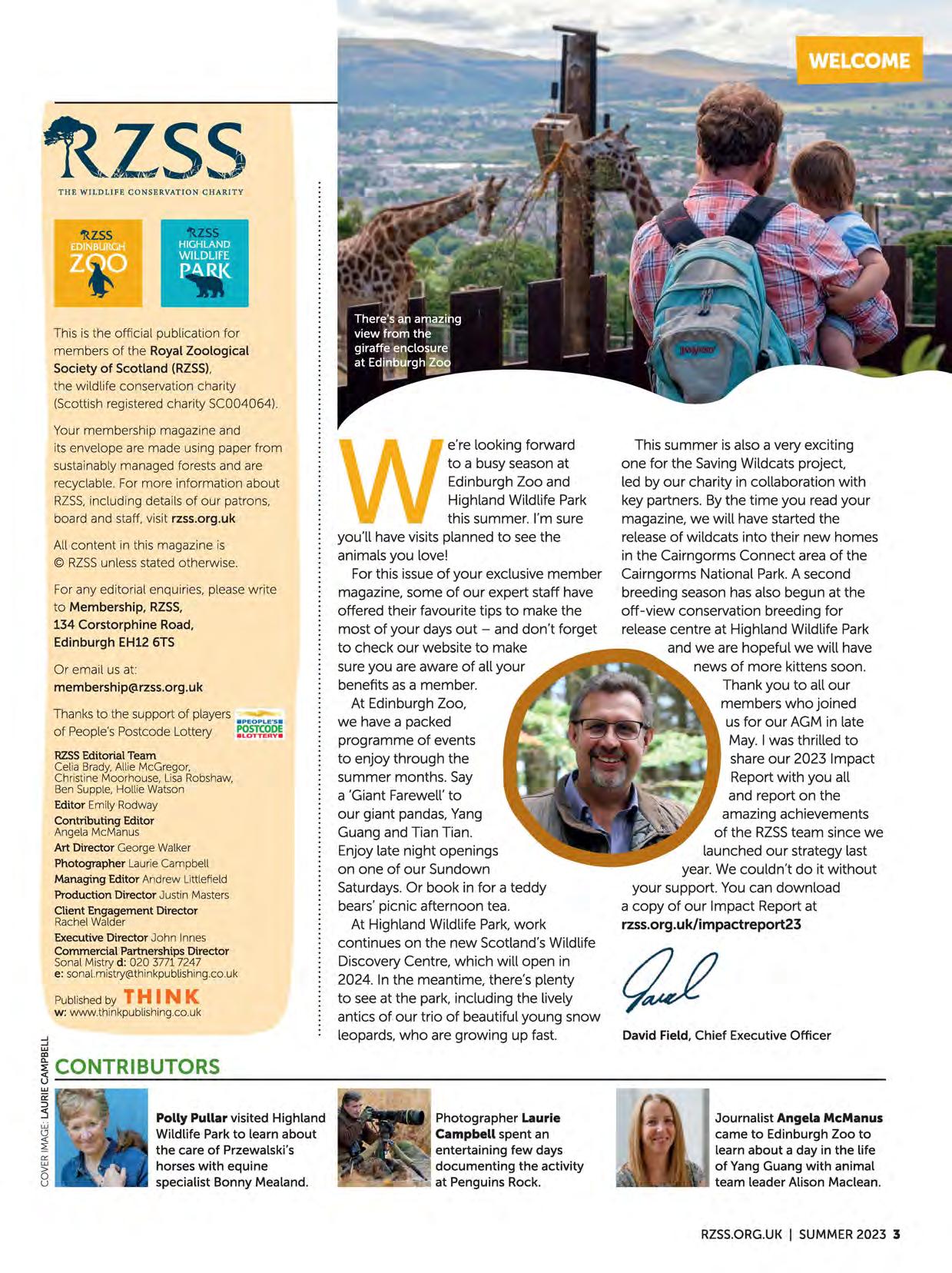
At Edinburgh Zoo, we have a packed programme of events to enjoy through the summer months. Say a 'Giant Farewell' to our giant pandas, Yang Guang and Tian Tian. Enjoy late night openings on one of our Sundown Saturdays. Or book in for a teddy bears' picnic afternoon tea.
At Highland Wildlife Park, work continues on the new Scotland's Wildlife Discovery Centre, which will open in 2024. In the meantime, there's plenty to see at the park, including the lively antics of our trio of beautiful young snow leopards, who are growing up fast.
This summer is also a very exciting one for the Saving Wildcats project, led by our charity in collaboration with key partners. By the time you read your magazine, we will have started the release of wildcats into their new homes in the Cairngorms Connect area of the Cairngorms National Park.A second breeding season has also begun at the off-view conservation breeding for release centre at Highland Wildlife Park and we are hopeful we will have news of more kittens soon. Thank you to all our members who joined us for our AGM in late May. I was thrilled to share our 2023 Impact Report with you all and report on the amazing achievements of the RZSSteam since we launched our strategy last year. We couldn't do it without your support. You can download a copy of our Impact Report at rzss.org.uk/impactreport23
Photographer Laurie Campbell spent an entertaining few days documenting the activity r.c.:.....,;....--....:....1 at Penguins Rock.
David Field, Chief Executive OfficerPenguins
For our cover feature, nature photographer Laurie Campbell took some wonderful pictures of Penguins Rock at Edinburgh Zoo during the busy breeding season (page 18)
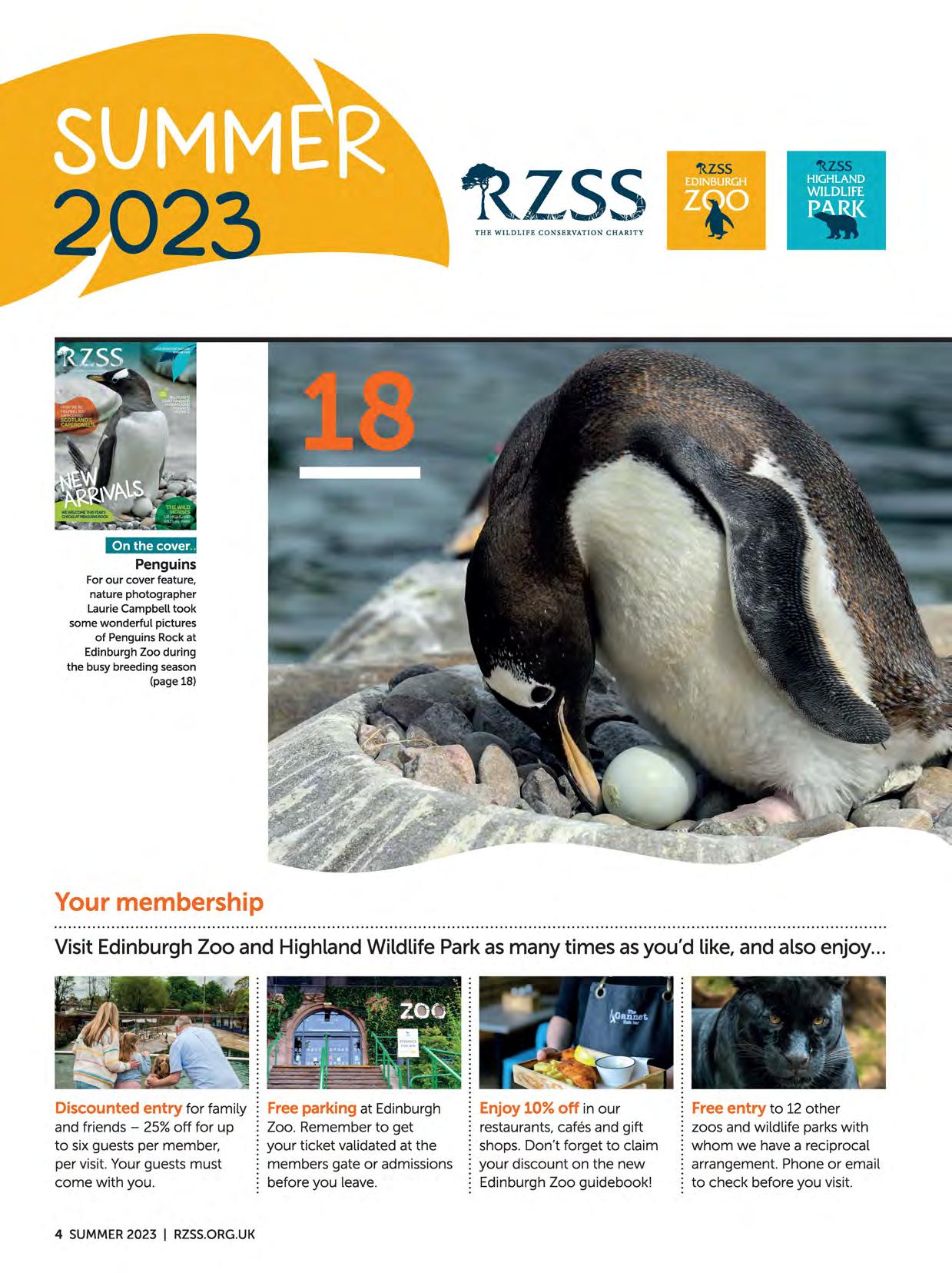
Visit
Discounted entry for family and friends -25% off for up to six guests per member, per visit. Your guests must come with you.
Free parking at Edinburgh Zoo. Remember to get your ticket validated at the members gate or admissions before you leave.
Enjoy 10% off in our restaurants, cafes and gift shops. Don't forget to claim your discount on the new Edinburgh Zoo guidebook!
Free entry to 12 other zoos and wildlife parks with whom we have a reciprocal arrangement. Phone or email to check before you visit.
Make the most of your visit
Our staff offer their top tips for the srmer
The big picture
Highland Wildlife Park's European grey wolves
Latest news from our parks
Conservation updates
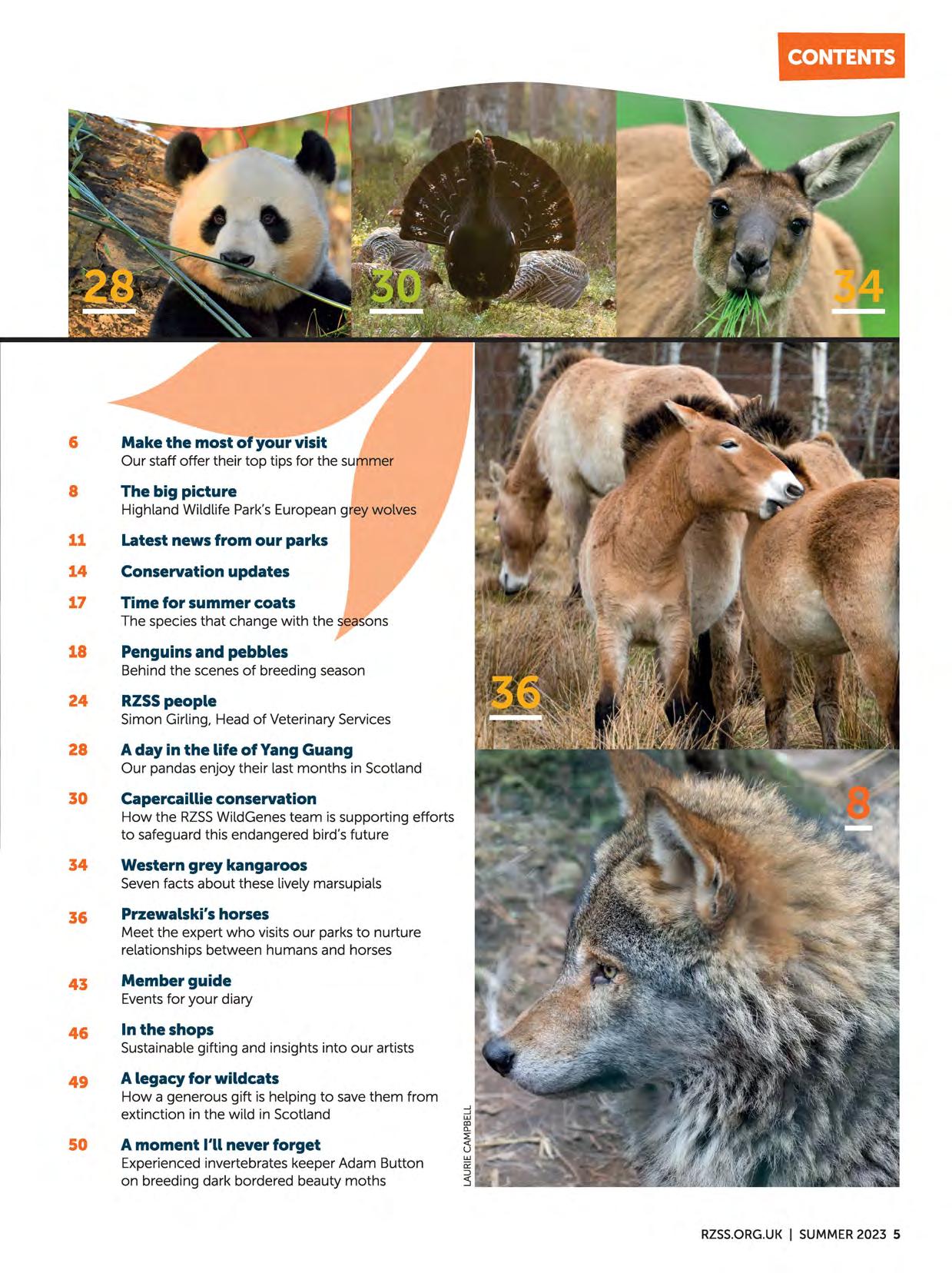
Time for summer coats
Penguins and pebbles
Behind the scenes of breeding season
RZSSpeople
Simon Girling, Head of Veterinary Services
A day in the life of Yang Guang
Our pandas enjoy their last months in Scotland
Capercaillie conservation
How the RZSSWildGenes team is supporting efforts to safeguard this endangered bird's future
Western grey kangaroos
Seven facts about these lively marsupials
Przewalski's horses
Meet the expert who visits our parks to nurture relationships between humans and horses
43 Member guide
Events for your diary
46 In the shops
Sustainable gifting and insights into our artists
49 A legacy for wildcats
How a generous gift is helping to save them from extinction in the wild in Scotland
50 A moment I'll never forget
Experienced invertebrates keeper Adam Button on breeding dark bordered beauty moths
"The exclusive members gate into Edinburgh Zoo is open from 1 April to the end of September. If you're using the opportunity
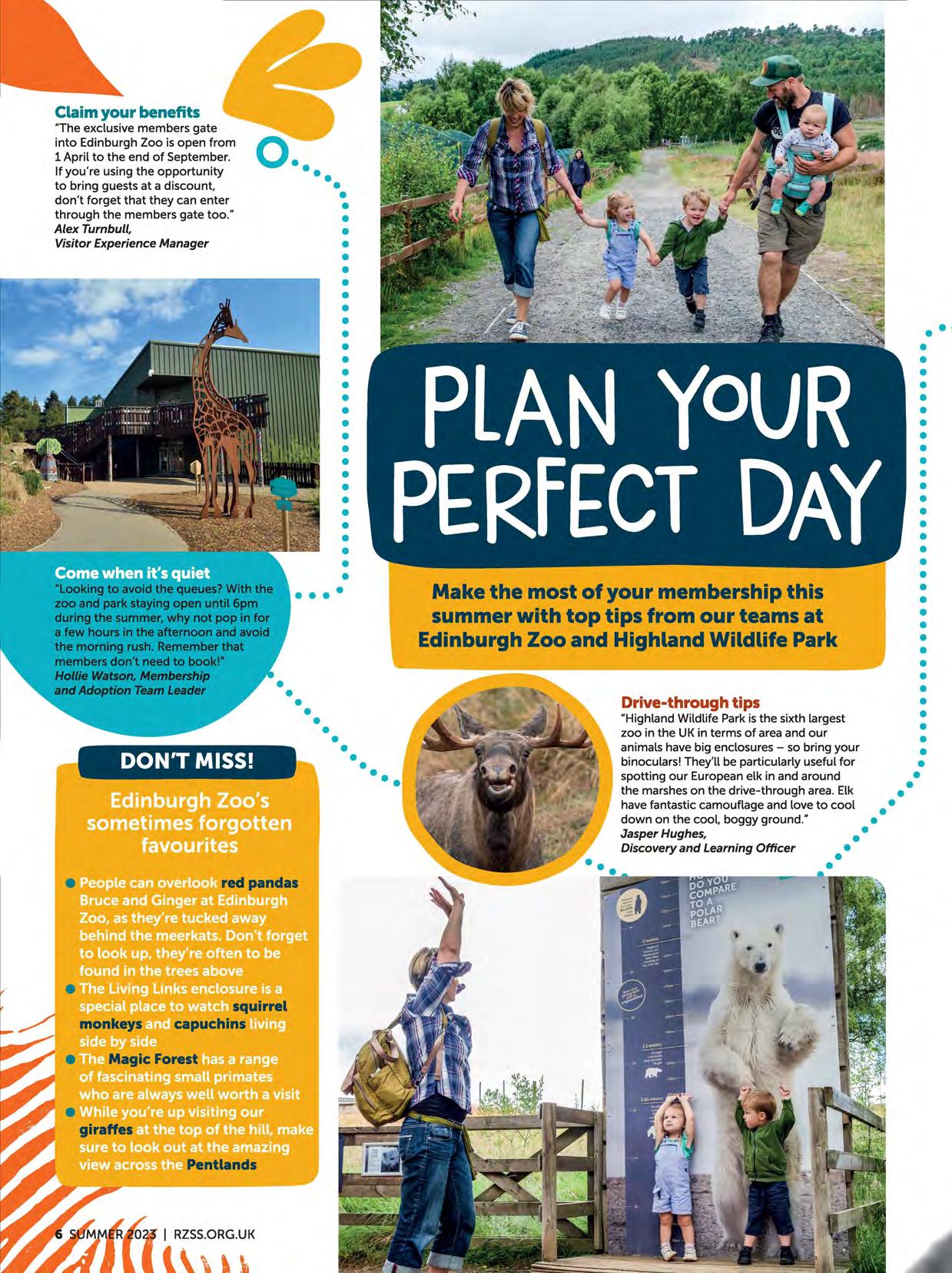
to bring guests at a discount, don't forget that they can enter through the members gate too."
Alex Turnbull, Visitor Experience Manager"J.ookl119 to avo1dthe queues?Withthe xooandparkstayingopenuntil&pm -duringUl• summer.why~ pop In for a fewhouriintheafternoonandavoid the momfng ruSh.Rememberthat membersdon'tnudto book!..
Make
"Highland Wildlife Park is the sixth largest zoo in the UK in terms of area and our animals have big enclosures -so bring your binoculars! They'll be particularly useful for spotting our European elk in and around the marshes on the drive-through area. Elk have fantastic camouflage and love to cool down on the cool, boggy ground."
Jasper Hughes, Discovery and Learning OfficerHead up high
"It's definitely worth putting in the effort to get to the top of the hill at the zoo if you can. There's now so much to see up there: giraffes, tigers and our pair of giant anteaters, Zeferino and Gizmo, who joined us only this year."
Alex Turnbull, Visitor Experience Managerthere are so many options and there is something for everyone. I usually pick the vegan haggis at lunchtimewould highly recommend!"
Mhairi McCafferty, Membership Assistant"If the snow leopards at Highland Wildlife Park look like they're in hunting mode, it might be because they can smell markhor goats! Every couple of weeks, when our snow leopard family are safety tucked up in their beds, we let the markhor into the bottom of the enclosure overnight, allowing them to graze the vegetation while providing olfactory stimulation for the snow leopards.·
Jasper Hughes, Discovery and Learning Officer• Explore in the evenings
• "Sundown Saturdays
• (edinburghzoo.org.uk/
: sundownsaturdays) are a rare
• opportunity to see a different side
• of the zoo, when our crepuscular
• animals are at their most active.
• Hear the lions' mighty roar,
• see the wallabies with an
• extra spring in their step and
• much more, as the zoo comes
• to life during sundown."
• Gavin Churcher, Events and Experiences CoordinatorPlan a return visit
"Enjoy your trip to Highland Wildlife Park this summer but plan a winter visit too!

Cold, dry days are perfect for
seeing the tigers, snow leopards
and polar bears as these cold-adapted animals love the snow and ice."
Jasper Hughes, Discovery and Learning Officer"You can upload your favourite photo from your visit to our personalised product machines, add your name, and collect a unique lasting memory of your day from the staff at the desks. And don't forget your 10% members discount!"
Laura Paterson, Head of Retail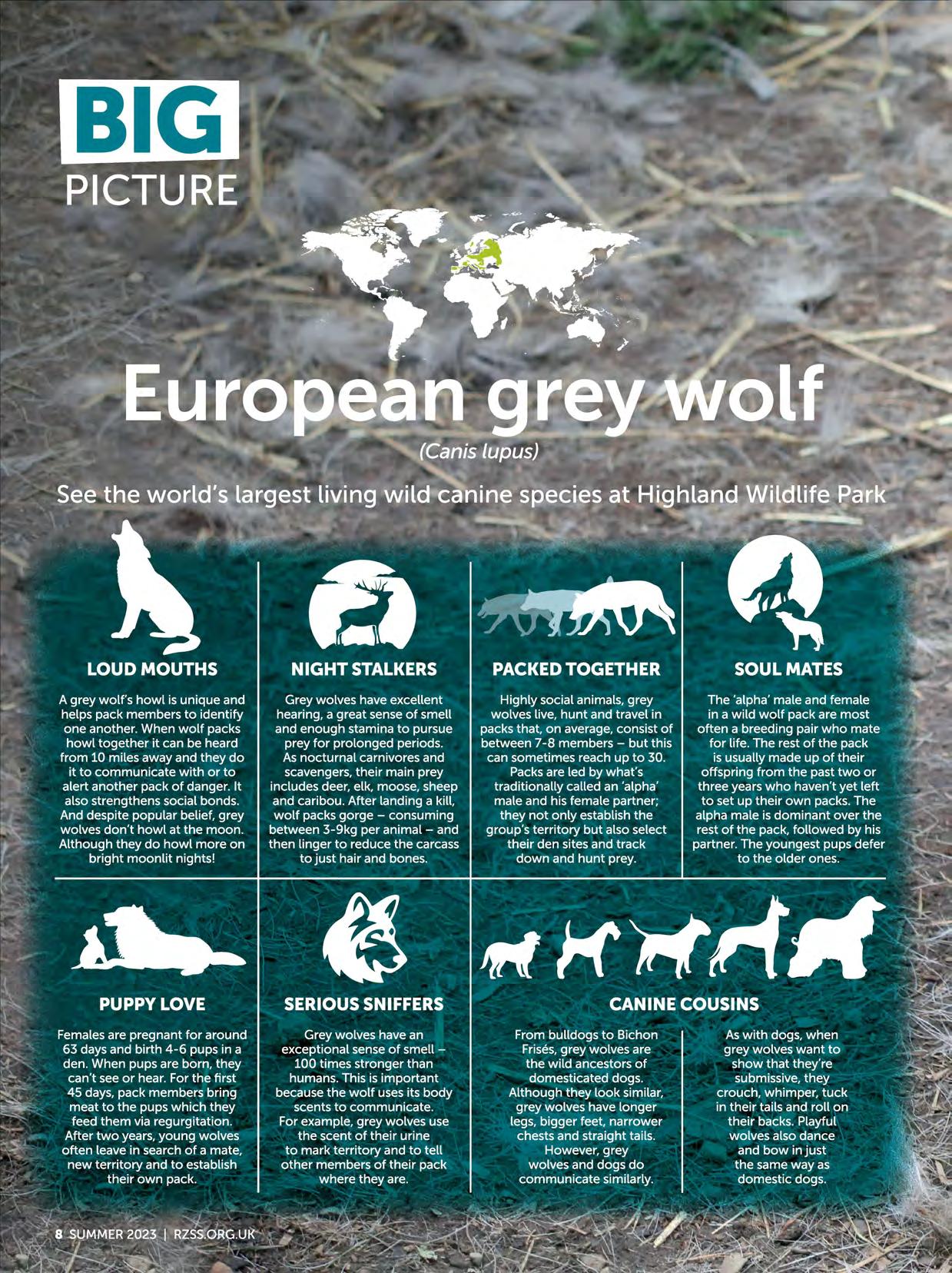
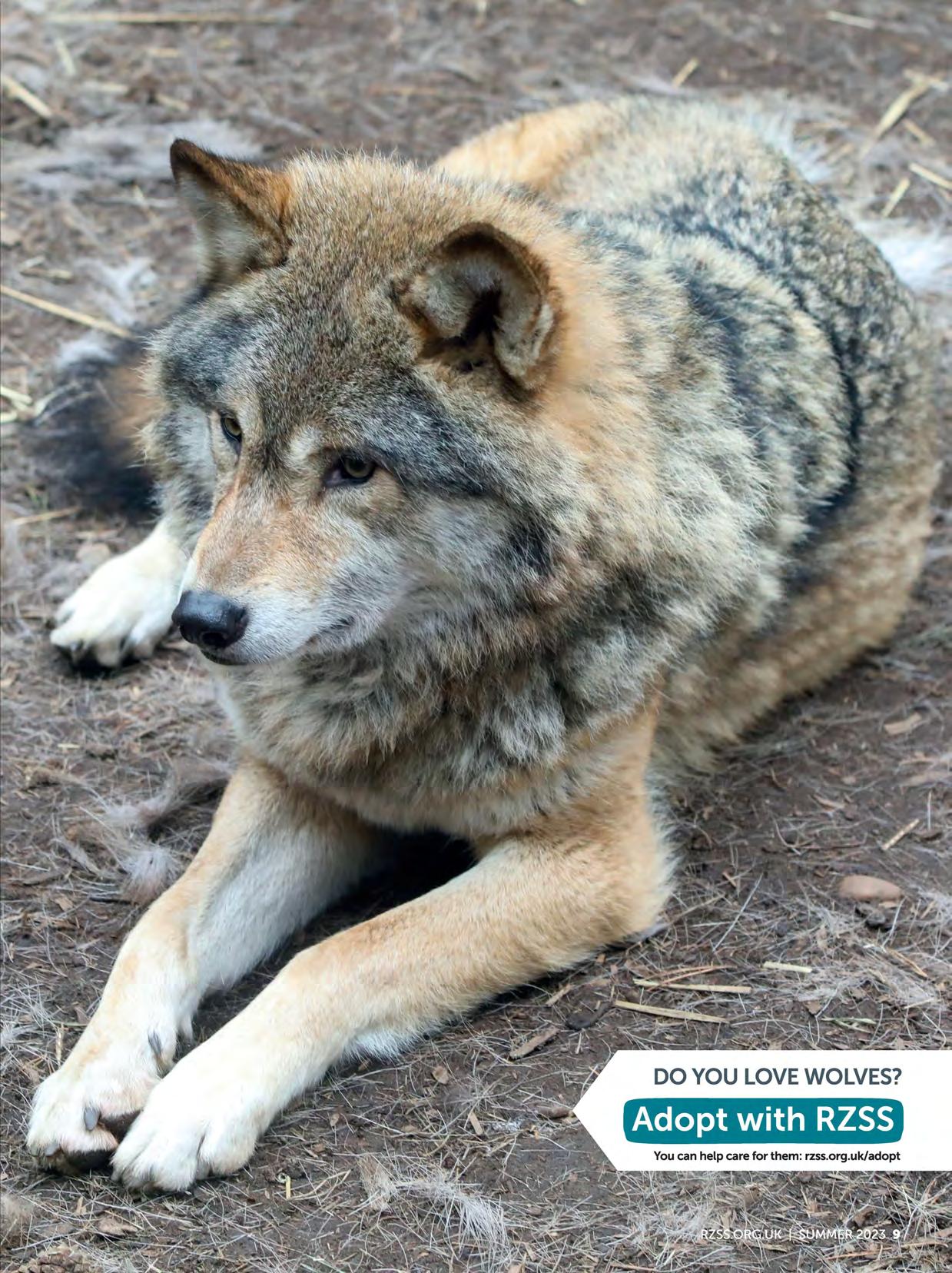

RZSShas donated £15,000 to Ukrainian zoos as part of an emergency appeal by the European Association of Zoos and Aquaria (EAZA).The fund, established to help Ukrainian zoos provide food and care for both animals and zoo staff during the ongoing crisis, has received donations
from 11,710individuals as well as 214 EAZA members and other organisations.
We are collaborating with the University of Edinburgh's Heritage Collections department on a project to catalogue, preserve and selectively digitise our charity's archives, alongside those from The Royal (Dick) School of Veterinary Studies and animal protection
EAZAworks closely with the Association of Zoos of Ukraine (AZU) and its Ukrainian members to allocate the relief fund to those in greatest need, reaching 27 Ukrainian zoos so far. charity OneKind.

The documents from RZSSinclude Funded by The Wellcome Trust, the hundreds of thousands of letters and One Health archival project brings together Scottish veterinary and animal rights records from the past 200 years. The aim is to make the archives more readily available to researchers and the public, and to offer fresh perspectives on animal health and welfare.
thousands of images, as well as fascinating records from World War II, when the zoo team had to consider the safety of animals as well as concerns of people living nearby. Find out more about the One Health archival project in the next issue of your member magazine.
As part of Edinburgh Zoo's 'Giant Farewell', new panda-themed bus livery has been unveiled in honour of beloved giant pandas, Yang Guang and Tian Tian.
The UK's only two giant pandas have been incredibly popular with visitors since they arrived at Edinburgh Zoo in 2011. We were thrilled to extend their initial 10-year stay here, especially as the pandemic made it much harder for people to visit them. The pair will now be nn!.£221 &±. -
moving to a new home in China at some point later this year. While we'll all miss them, we've been celebrating their important role in helping to connect millions of people with nature as well as raising vital funds for wildlife conservation.
A number of Edinburgh and Lothians buses operated by our long-standing official transport partner, Lothian Buses, will feature the panda design throughout the summer.
Two baby male armadillos have been named after the actor Pedro Pascal and Aztec emperor Montezuma. The baby armadillos, known as pups, have been spending a lot of time in their burrow but as they grow in confidence over the next few weeks, visitors may spot them exploring their enclosure more.
We're delighted to partner with Scottish Autism. Scotland's largest autism-specific charity, to ensure a more accessible and inclusive experience for autistic visitors to Edinburgh Zoo. This new partnership will help us to design new initiatives that can reduce barriers and improve the experience for autistic people and their families when visiting the zoo.
This is just one more step on the path to fulfillingour pledge to enable more than 100 communities to better protect nature by 2030. As RZSS accessibility and inclusion manager Amy Cox, explains, this partnership will be vital to guaranteeing that the zoo is a place for everyone. She said: "Workingwith Scottish Autism will help us reach individuals and communities with new opportunities to ensure more people experience the benefits of making connections with nature."
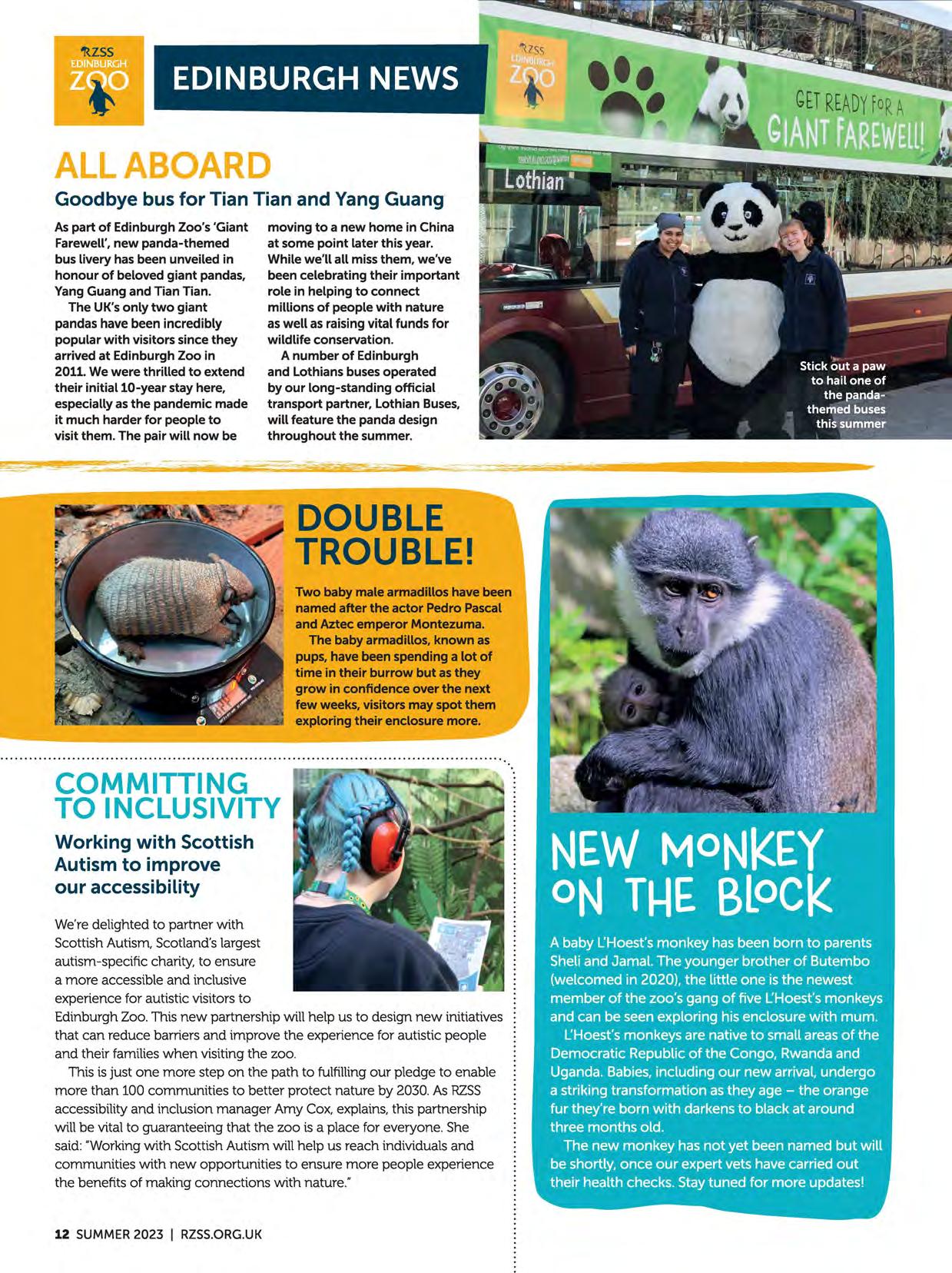
Highland Wildlife Park has a new resident, after male wolverine Trotyl joined us from Poland.
Trotyl has now mixed with our other wolverines, Astrid and Tina, and is gaining confidence during training sessions. Astrid seems particularly interested in Trotyl, and he has
been seen rolling on his back being submissive to her.
Wolverines are part of the mustelidae family (also including weasels, stoats, badgers and otters), and are known for their big appetites.
Look out for Trotyl snoozing under the smaller enclosure's juniper tree.
In May, snow leopard cubs Maya, Padme and Yashin celebrated their first birthday. Keepers treated the cubs to a giant number one-shaped pifiata full of their favourite tasty treats and some hair from the park's Bactrian camels for enrichment. The cubs enjoyed their gifts with parents Animesh and Koshi.
Judith van de Voorde, senior carnivore keeper at Highland Wildlife Park, said: "We are all thrilled to wish Maya, Padme and Yashin a happy first birthday. They have settled in so well and are incredibly popular with visitors and staff alike, with their distinct personalities capturing hearts over the last year."

Our rare pond mud snail conservation breeding programme has reached a major milestone. Five of the tiny freshwater snails were recently found at the Red Moss reserve in the Pentlands, where we released 80 of them in 2018. Once a widespread presence in Britain, the species can now only be found in a handful of sites across the country due to habitat loss and pollution. The discovery of pond mud snails from our original release is an exciting step forward in the breeding for release programme, as it confirms that the selected release site is suitable for the snails -very promising for future releases.
The efforts of our skilled staff have played a vital role in the reintroduction of more than 5,000 Partula snails to the French Polynesian islands of Moorea and Tahiti -almost 30 years after they were nearly wiped out. Working in partnership with London, Whipsnade and St Louis zoos, RZSSreared thousands of Partula snails. In April, the snails were flown to Moorea and Tahiti for the largest wildlife reintroduction in history, accompanied by one of our specialist keepers, Craig Close.
It's hoped that this collaborative release will help restore the ecological balance of these Polynesian islands.
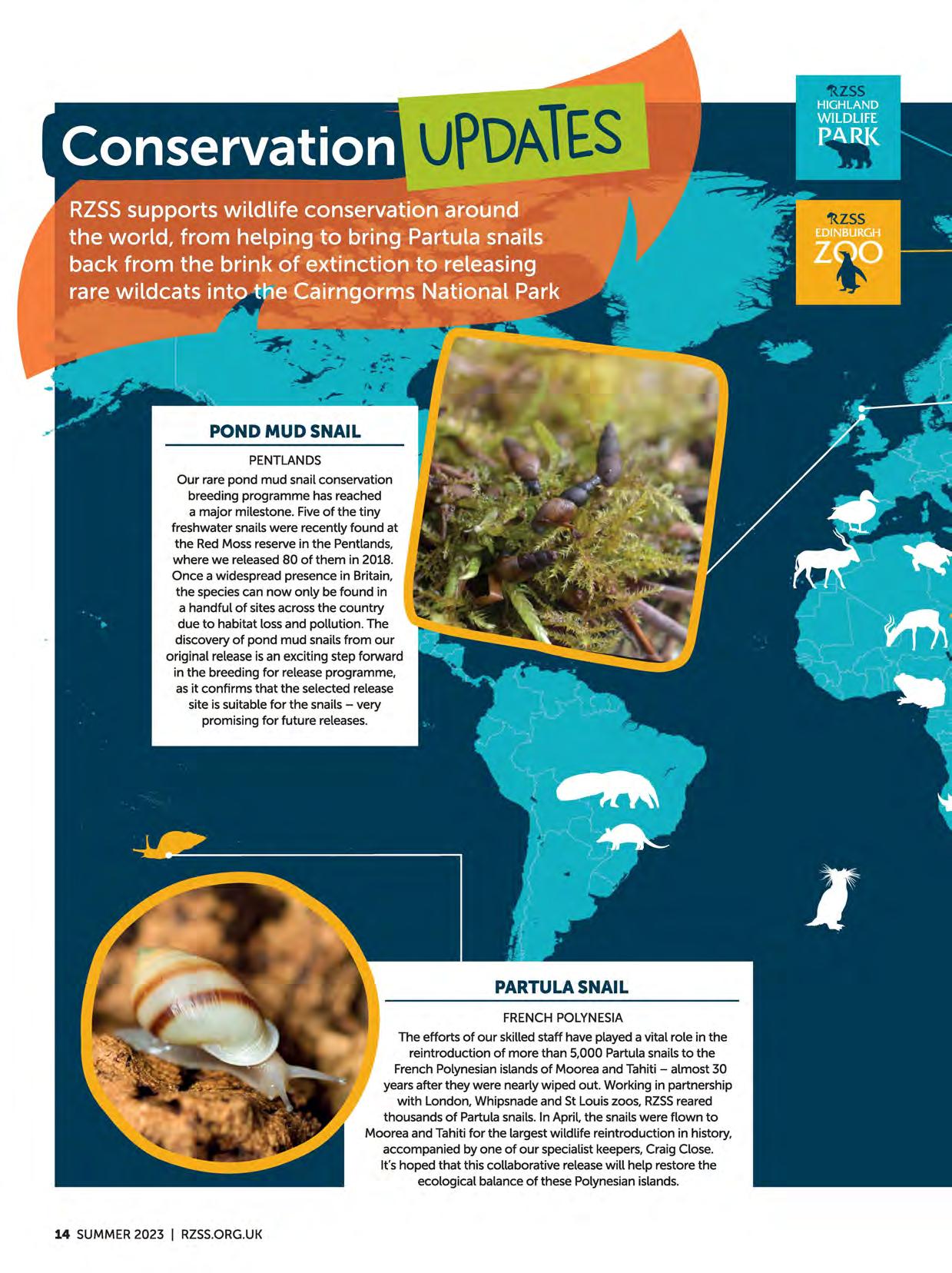
The scimitar-horned oryx, a species of antelope that was extinct in the wild at the beginning of the century, is thriving again thanks in part to effective management of captive populations. That's according to research by The Royal (Dick) School of Veterinary Studies, RZSSand our partners in the USA and the United Arab Emirates. Scientists studied DNA data from 49 oryx from four populations to look for evidence of inbreeding and harmful genetic mutations. Genetic mutations were found to have a reduced burden in managed groups of oryx compared with unmanaged populations, suggesting that conservation management focused on genetic diversity improves a population's chances of thriving in the long-term.
The first wildcats from the Saving Wildcats project are being released into the Cairngorms Connect area of the Cairngorms National Park this summer. In advance of their release, the young wildcats were moved into pre-release enclosures at the off-display site within Highland Wildlife Park. Here, they were given the opportunity to develop natural behaviours and key life skills including hunting, foraging and scent marking. The wildcats' release is a hugely significant moment for the RZSS-led Saving Wildcats partnership, which is striving to restore Scotland's critically endangered wildcat population.
Turn to page 49 to read more.

Earlier this year, Helen Senn, Alex Ball and Kara Dicks from the RZSSconservation team ran a four-day conservation genetics workshop at the Sharjah International Conservation Forum for Arabia's Biodiversity in the United Arab Emirates. The workshop was attended by 120 people and featured sessions on basic genetics, reintroduction, taxonomy, genetic monitoring and biobanking.
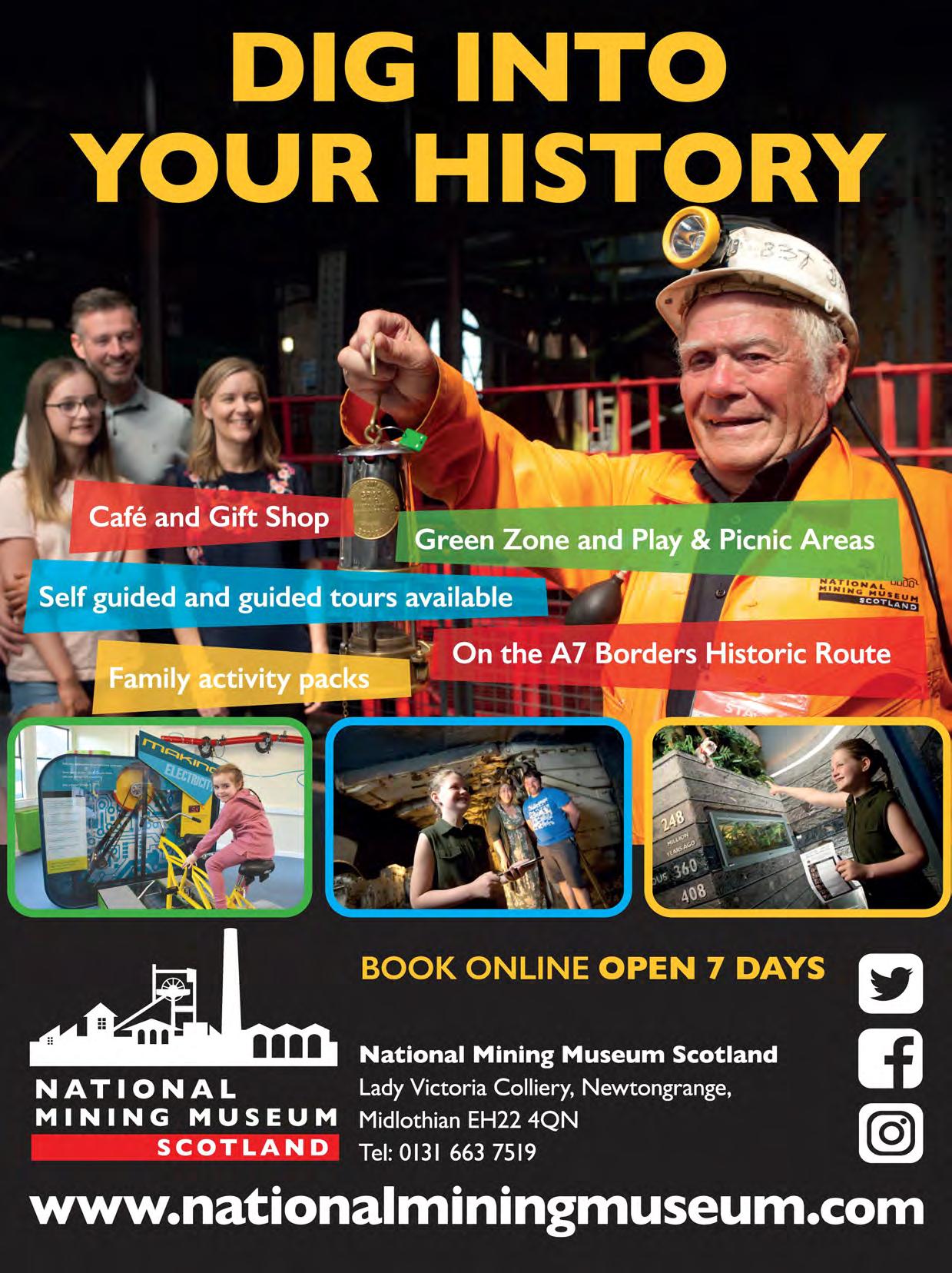
Snow leopards have thick, soft fur with dark rosette-shaped markings. In the wild, their fur gets even thicker during the colder months, when it also turns almost white to match the snow. In summer, it changes to darker shades of cream and grey to allow the animals to blend in with the mountain environment in which they roam. We have five snow leopards at Highland Wildlife Park: Animesh, Koshi and their trio of cubs, Maya, Padme and Yashin.
As with snow leopards, Arctic foxes change the colour of their fur to enable them to camouflage themselves through the seasons. In winter it is a bright white and in summer it's brown, grey or a reddish colour to blend in against rocks and at forest edges. Their winter fur is also 200% thicker than their summer fur. At Highland Wildlife Park, our Arctic foxes Jack and Sarah can be seen behind the visitor centre, on the way to the tigers.
Edinburgh Zoo is home to two Southern pudus -a male called Evan and a female called Violetta. Native to southern Chile and south-western Argentina, the Southern pudu is the smallest deer in the world and lives in dense temperate forest. Males have two short antlers, each consisting of a single spike measuring between 7-lOcm, but every summer they shed their antlers, growing new ones for the breeding season.
In summer, penguins experience what's known as a 'catastrophic' moult when they rapidly shed all their feathers over a period of a few weeks, growing a new coat to protect them from a winter at sea. During this period, they are unable to swim without their waterproof feathers, and must live on the fat reserves they've built up. We have three species of penguins at Edinburgh Zoo: king penguins, gentoos and Northern rockhoppers.
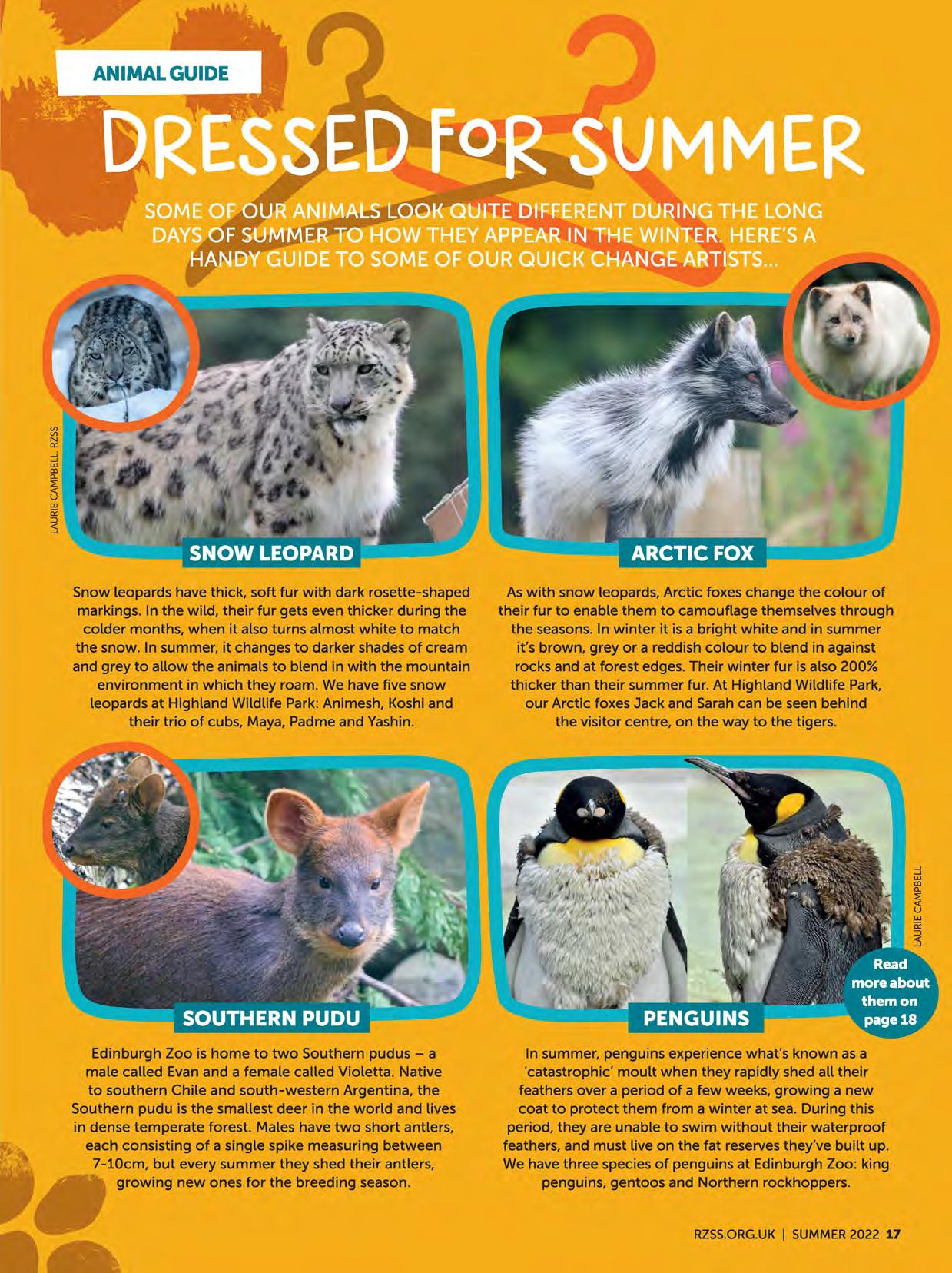

here's never a dull moment during the breeding season at Penguins Rock When you read this in mid-summer, the year's crop of fluffy grey-and-white chicks will be growing up fast, pestering their parents for food. But the hustle, bustle and noise begins back in early spring.
I visit in mid-April,when the colony of 100 or so gentoo penguins and around 20 Northern rockhoppers are busily incubating the next generation. Watching their activity -first from the bridge and then the viewing booth -I'm soon engrossed by the goings-on.
There's comedy, drama ... and devotion: waddling with flippers outstretched, a male returns to his mate on the nest. They bow to each other, then throw their heads back, open beaks pointing upwards, and let out a series of loud honks -gahhh gahhh gahhh! This ritual, called an ecstatic display, is a powerful affirmation of their bond.
j The nest -a pile of pebbles within a ring -is a constant work in progress. The male busily sets about picking
PengUlnsRockboaststhe largest owtdoorP4Q'19Min pool In Europe:its 65mlong. Um Mp at-~ polnl llffdholdl 1.2millionlltresofwater.Eve,y t,trd herehManameand~ identfflableby thefr,Upper tags. with females tagged on the leftandmalel on lhe right.
up pebbles and adding them to the collection. To penguins, pebbles are as much love tokens as building materials. Earlierin the year, when bonding and nest-building began, the male would have courted his mate with pebble gifts.
This season's running tally of eggs is written on the blackboard beside the bridge, where I join experienced animal keeper Lorna Moffat."Our two fertile rockhopper eggs are due to start hatching next week," she tells me. "Meanwhile, some of our gentoos are still laying!"
We watch as another pair honk loudly, then change over on the nest, gently
turning over their two eggs while they do so. Both parents take it in turns to incubate the eggs. In the wild, the free parent would go and hunt. Here, they spend their time off swimming, snoozing on the other side of the pool, or sometimes just standing guard, flippers outstretched -a picture of commitment.
Breeding season began in January with the first signs of courtship behaviour. "There's ecstatic displaying and what's called a bow-hiss -bowing and making a little hissing noise while presenting a pebble gift. It's always fascinating to observe the pairings shape up, given what we know of each bird's personality," says Lorna.
Gentoos are serial monogamistsoften changing mates from one year to the next but bonding closely for the duration of the breeding season. "Though not always ... we'll sometimes notice a male sneaking off for a cheeky dalliance," Loma laughs. "It'slike a soap opera!"
The first of March is traditionally the date that staff lay out the nest rings and
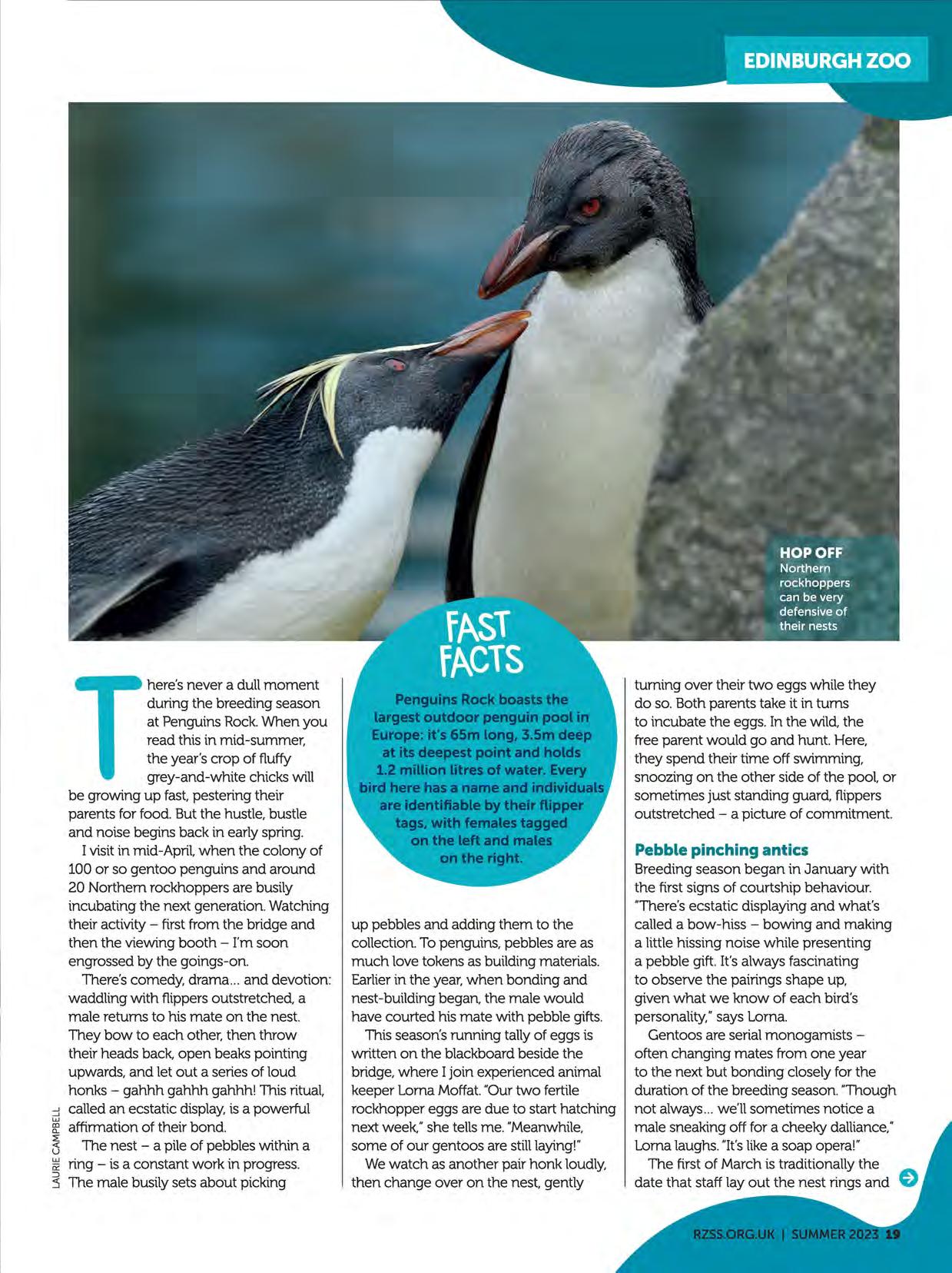

provide pebbles. There's a lot of fighting over that perfect pebble, and stealing them from others' nests. "Even when a pair is mating, you might see other birds come along to pinch their pebbles -to the great amusement of many of our visitors!"
When laying begins, Lorna and colleagues mark the eggs with a 1 or 2 to keep track of laying order. "It can be a challenge, especially with the rockhoppers as they're very defensive of their nests. But they do allow us to walk slowly among the nests to hand-feed them!"
Keeping track of pairings and checking them against who's related to who is very important. "Our stud book records show each bird's ancestry. If close relatives have paired up, their eggs will be managed to ensure the genetic health of the colony." This means removing the eggs and replacing them with wooden dummies, so that the pair may later become foster parents if needed.
Eggs do occasionally need to be fostered out, as Loma explains while we watch two of her colleagues checking a nest. "Trent, the male on that nest, is on medication, so we're checking to see if his eggs are fertile. If they are, we will probably foster them out to avoid him passing on medication to his chicks while feeding them. It's a shame, as Trent and his partner Dolores are fantastic parents, but it's what's best for the chicks' health."
Then there's Mr Christmas, who cannot be trusted to care for eggs. "He's a nice bird, but rubbish at looking after his eggs -they often end up rolling off the nest. His wife Steffiis genetically important though, so we are keen to give their eggs a chance." Foster parents in the colony also include same-sex pairs, such as Dolores and Trent's daughter Nagini and her partner Ginger.
Tucked away behind rocks in the smaller enclosure north of the main pool are several pairs of nesting Northern rockhoppers, well known for their distinctive yellow eyebrow-style crests and cool charisma. "Ijust love this species -they're so bold and sassy," Loma muses.
"Over there in the comer is our oldest penguin Nestor, who's just turned 30 -with his much younger wife Issy. Rockhoppers usually mate for life, only changing partners if one dies," Loma explains."They also build pebble nests but will add organic material like weeds, twigs and leaves too. Their courtship display is a lot quieter than the gentoos, and they indulge in less pebble-pinching antics!"
Normally three species live together at Penguins Rock, but during the breeding season the rockhoppers are separated out from the gentoos and the group of five bachelor king penguins. "They're endangered, so their eggs are very precious and we'd rather not risk losing one in a scuffle,"says Loma. "But don't get me wrong, the wee rockhoppers can stand their ground against the gentoos!"
Rockhopper penguins are difficult to breed in captivity -Edinburgh is one of only six zoos worldwide to do so successfully. "Between 2010 and 2017, we had no rockhopper hatchlings due to an ageing colony," Loma explains.
"The arrival of ten younger birds from Vienna Zoo (which has the world's largest captive population) helped to restart the breeding here. So now we're seeing the second generation -our chicks having A babies of their own."
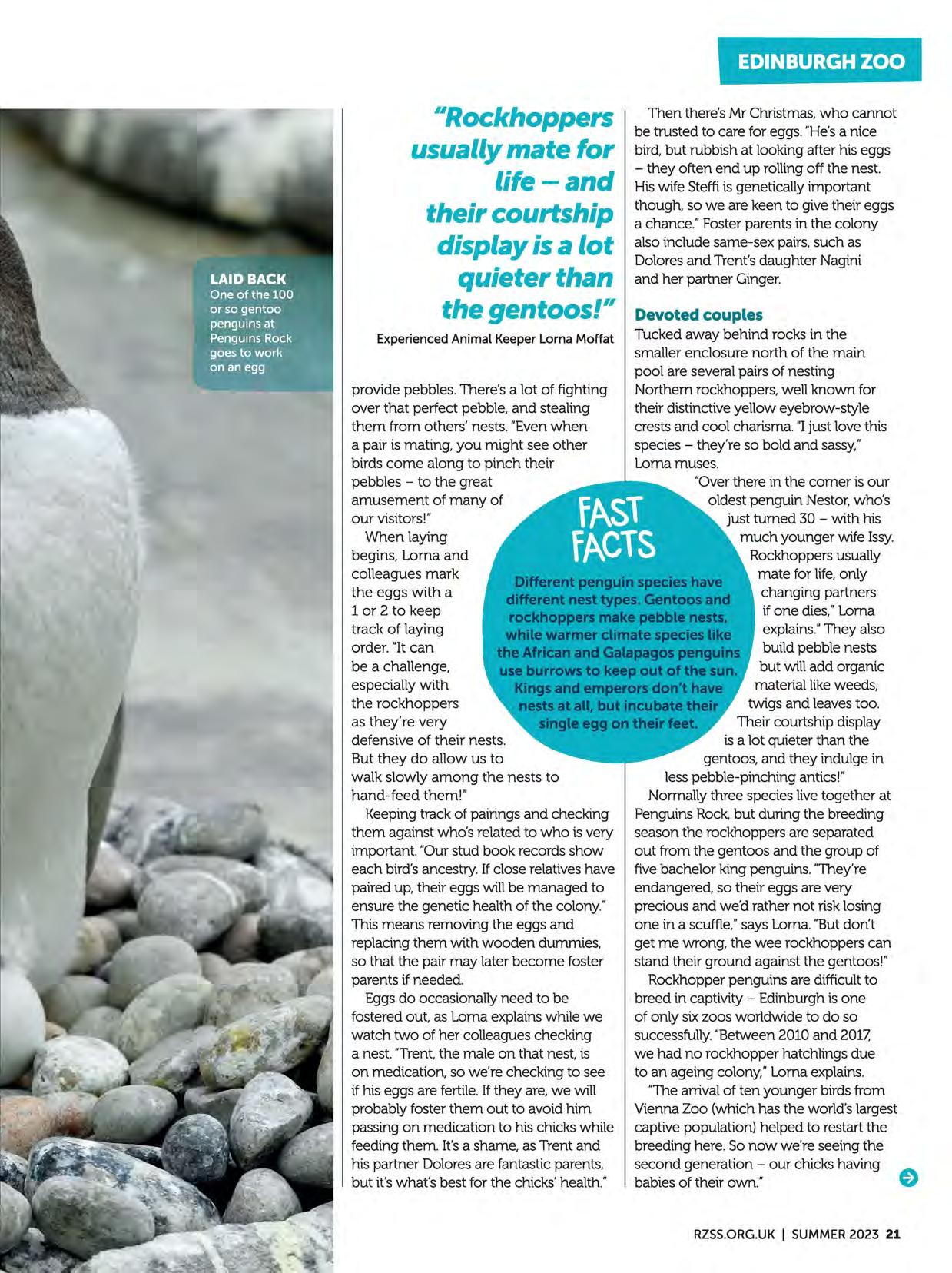
Rockhoppers usually mate for life-and their courtship display is a lot quieter than the gentoosr
1
Very occasionally, as happened in 2020, a rockhopper chick needs to be hand-reared -as the species is classified as Endangered, Loma and colleagues will intervene to save a chick who is poorly or failing to gain weight. "Any chick that we have is a blessing -last year we had two, Frankie and Sandy. This year we have two fertile eggs -one each for previously successful pairs Bruce and Pinny, and Penny and Wesley. Hopefully they'll hatch and rear them with no help from us."

Sadly, as with all baby animals, survival isn't guaranteed. Not all the eggs will hatch after the incubation period of around 35 days -some are infertile, others may break or roll off the nest during a squabble. Of those that do hatch, only half the chicks might make it to adulthood. Lorna explains, "For example, of last year's 22 gentoo
11
11 Their eggs are very precious and we 1 d rather not risk losing one in a scuffle
Experienced Animal Keeper Lorna Moffat
hatchlings, 11 survived. Some died within the first day or two due to inexperienced parenting or simply illness -these things happen. After hatching, we check and weigh the young chicks daily,to make sure they're healthy and gaining sufficient weight. It can be tricky checking the rockhopper nests as they're more defensive. But for the rest, we're as handsoff as possible -the parents know best."
During that period, Lorna and the team are on round-the-clock feeding duty, more than doubling the quantity of fish given to the parents. "They feed their young by regurgitation -for new hatchlings, it'll be a fully digested mush. As the chick grows, the fish chunks get bigger -like weaning a baby. It just
amazes me how penguins have evolved to digest the fish for the size of chick."
Nurtured and fed by both parents, the babies grow quickly, gaining 10%of their body weight every day and going from 90g at hatching to 4kg at 12 weeks.
Growing up and moving on "Chicksusually stay on the nest for about 12 weeks, but by 10 weeks their parents are getting absolutely fed up of them!" Lorna laughs. "We'llsee what we call feed chasing, which happens in the wild too: the chicks constantly running after their annoyed parents, loudly pestering them for food. And that's when we know - it's time for them to leave home."
At around this age, chicks in the wild will be left in large creche groups by their parents as they go back out to sea for longer to hunt. Here at the zoo, this is simulated by moving the chicks of both species into the separate creche enclosure in around August or September. The adult rockhoppers return to the main colony.
"For the first week or so, you might hear chicks and parents calling to each other," Lorna says, "but they don't have the parental attachment that chimps or humans do. The adults just get on with their lives and start their annual moult. In the creche, the chicks will learn to swim and to be hand fed. Once they've shed their down fluff,they'll join the colony in the main enclosure. Then that's breeding season done for another year ... and we can relax!"
The colony's breeding success is testament to the care and dedication of Lorna and her colleagues, who are constantly adding to their knowledge and expertise in order to do their best for the birds of Penguins Rock.
"In 2019, I was lucky enough to go out to the Falkland Islands to see the gentoo breeding colonies for myself," Lorna tells me. "It was wonderful to watch penguins in the wild do the same things ours do here -confirmation that our birds are happy and able to express their natural behaviours."
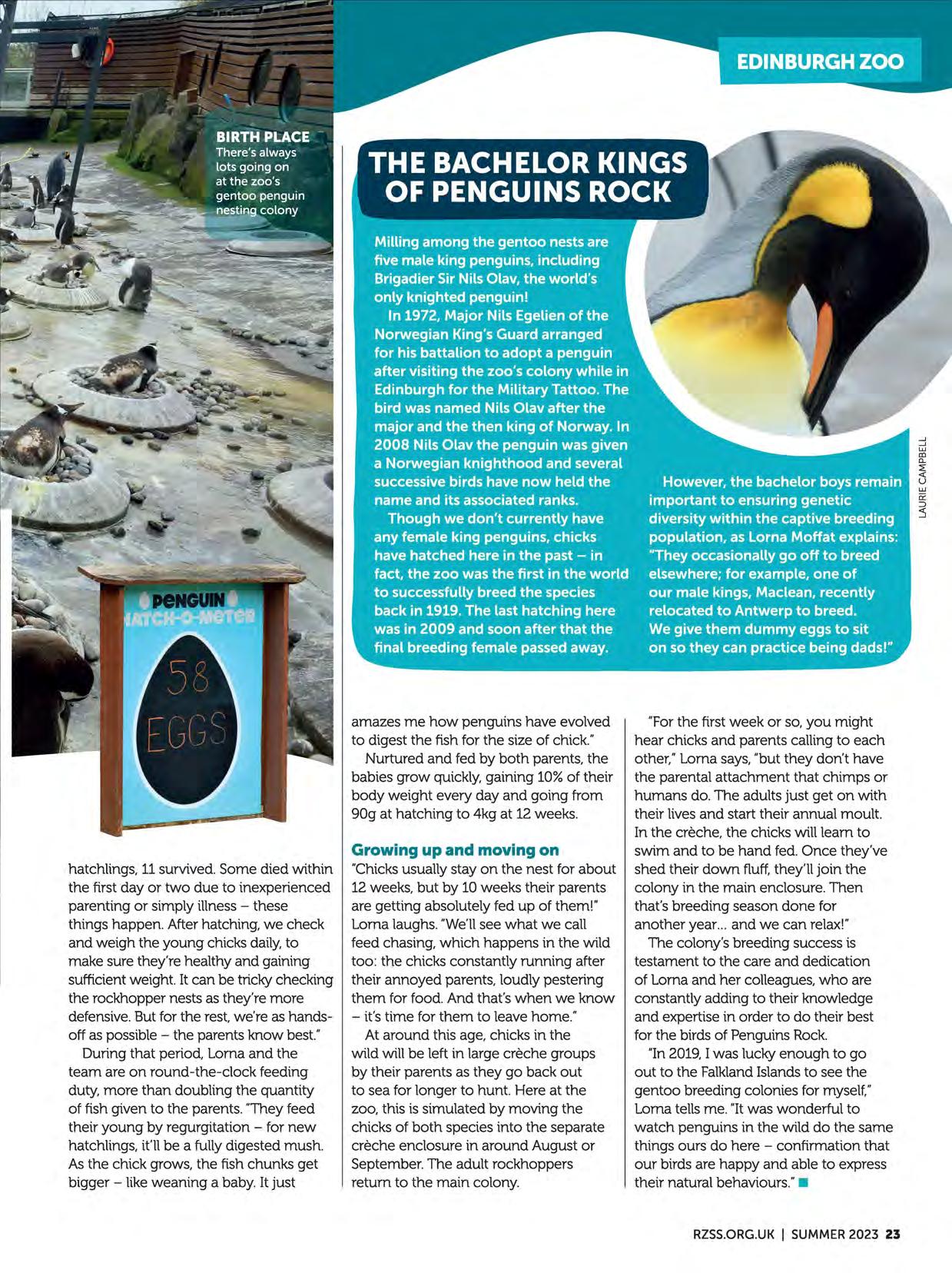
As head of veterinary services for RZSS, Professor Simon Girling enjoys the opportunity to work with a vast range of animals while contributing to the development of his profession
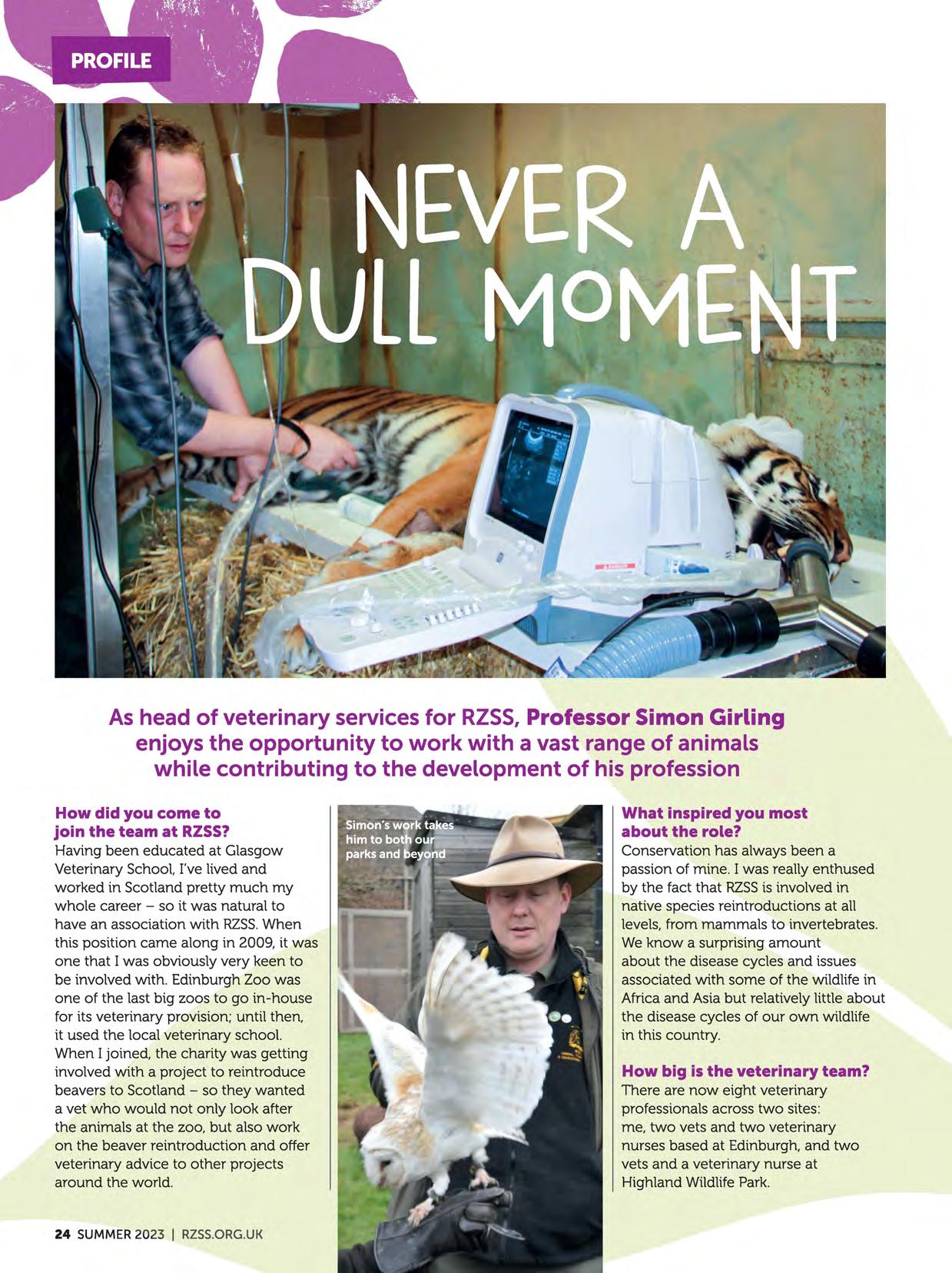
How did you come to join the team at RZSS?
Having been educated at Glasgow Veterinary School, I've lived and worked in Scotland pretty much my whole career -so it was natural to have an association with RZSS.When this position came along in 2009, it was one that I was obviously very keen to be involved with. Edinburgh Zoo was one of the last big zoos to go in-house for its veterinary provision; until then, it used the local veterinary school. When I joined, the charity was getting involved with a project to reintroduce beavers to Scotland -so they wanted a vet who would not only look after the animals at the zoo, but also work on the beaver reintroduction and offer veterinary advice to other projects around the world.
What inspired you most about the role?
Conservation has always been a passion of mine. I was really enthused by the fact that RZSSis involved in native species reintroductions at all levels, from mammals to invertebrates. We know a surprising amount about the disease cycles and issues associated with some of the wildlife in Africa and Asia but relatively little about the disease cycles of our own wildlife in this country.
How big is the veterinary team? There are now eight veterinary professionals across two sites: me, two vets and two veterinary nurses based at Edinburgh, and two vets and a veterinary nurse at Highland Wildlife Park.
How do the veterinary staff prioritise their time?
There are preventative aspects to the work, such as vaccinations, but then we obviously have sick animals from time to time and we'll treat them on a triage basis -we see the sickest ones first and then work our way through the list. Elderly animals come with their own problems such as arthritis and other issues associated with age, so we also have programmes in place to conduct regular welfare checks and individual physical assessments. Some of the more elderly animals may be on analgesics and anti-inflammatory medications.
As head of the team, do you still get hands-on with the animals?
Not as much as my veterinary colleagues, but tomorrow I'm going to Highland Wildlife Park to try and sort out a camel with a dental problem. Yesterday I looked at a rainbow lorikeet, a turkey vulture and a rhino.
How do the keepers help your team to carry out their jobs?
We need to be able to work with the animals to assess their health on a regular basis and, if we're concerned at all, to take samples. Some animals lend themselves to that relatively well -we can pick up a penguin to take a sample and the penguin doesn't seem to mind that too much because they're hand-fed and relatively amenable. The big carnivores and primates are not!
So, we work with the keeping staff to train some of the animals to allow us to assess their health. The staff working
with the chimpanzees, for example, train them on a series of signals to open their mouths or to show their feet or bottoms. Our giant pandas are trained to allow a blood sample to be taken, as are polar bears and tigers.
How does animal training work?
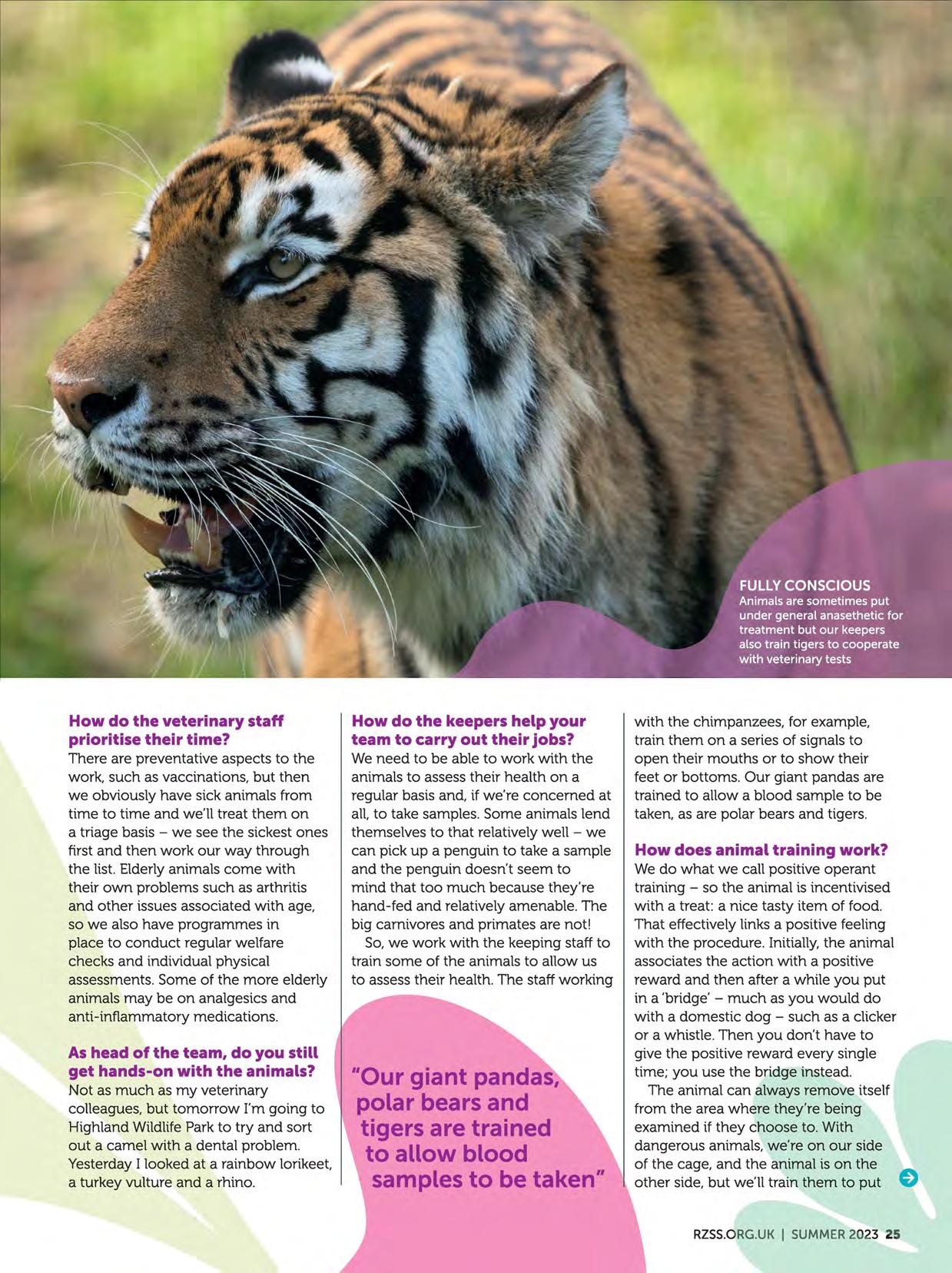
We do what we call positive operant training -so the animal is incentivised with a treat: a nice tasty item of food. That effectively links a positive feeling with the procedure. Initially, the animal associates the action with a positive reward and then after a while you put in a 'bridge· -much as you would do with a domestic dog -such as a clicker or a whistle. Then you don't have to give the positive reward every single time; you use the bridge instead.
The animal can always remove itself from the area where they're being examined if they choose to. With dangerous animals, we're on our side of the cage, and the animal is on the other side, but we'll train them to put 0
"Our giant pandas, polar bears and tigers are trained to allow blood samples to be taken"

a part of their anatomy into our areasuch as the tail of a tiger or the foot of a polar bear -so we can put a needle in and take a blood sample.
How often does that kind of training need to happen?
Training needs to be regular -pretty much daily or every other day -because otherwise animals forget. That requires keeper time as well as vet time because we need to be present too. But the big plus for us is we can then do a much better physical and bodily examination
of an animal that might be sick, or that we're slightly concerned about, without having to go through the process of anaesthetising them.
In what other ways is your role more complex than dealing with domestic animals?
The medicines are used 'off licence'they're not designed to be used in these particular species, but we either have data to indicate that they are effective and safe in these species, or we believe from extrapolation that they are efficacious and safe to use. For example, cat vaccines are licensed for domestic cats, but we are using them in exotic cats. For treatment drugs, you scale up the dosage per kilogram of weight, but the vaccine doses work on the basis of presenting the immune system with a specific number of particles that you want to be vaccinated against, rather than on a body size.
Which animals do you find the most fascinating?
Although a lot has been written down about giant pandas, there's still an awful lot that we don't know. They are just so very different biologically from other bears in terms of diet, behaviours and
physiology. Working with Yang
Guang and Tian Tian we've collaborated with other external organisations, including Edinburgh University and specialists around the world, and have done a lot of research into their hormone cycles, trying to work out what is going on with this species when it comes to reproduction.
What have been your proudest achivements so far?
I set up the first UKresidency training position for the European College of Zoological Medicine, which is the route by which vets can become specialists in this field. I'm proud to further the discipline and knowledge base of zoo and wildlife medicine and I'm also proud to have been part of the team that reintroduced a mammalian species, beavers, into the UK for the first time in history. No other animal, certainly in temperate climates, has the potential and the ability to so alter an environment for the good as far as biodiversity is concerned.
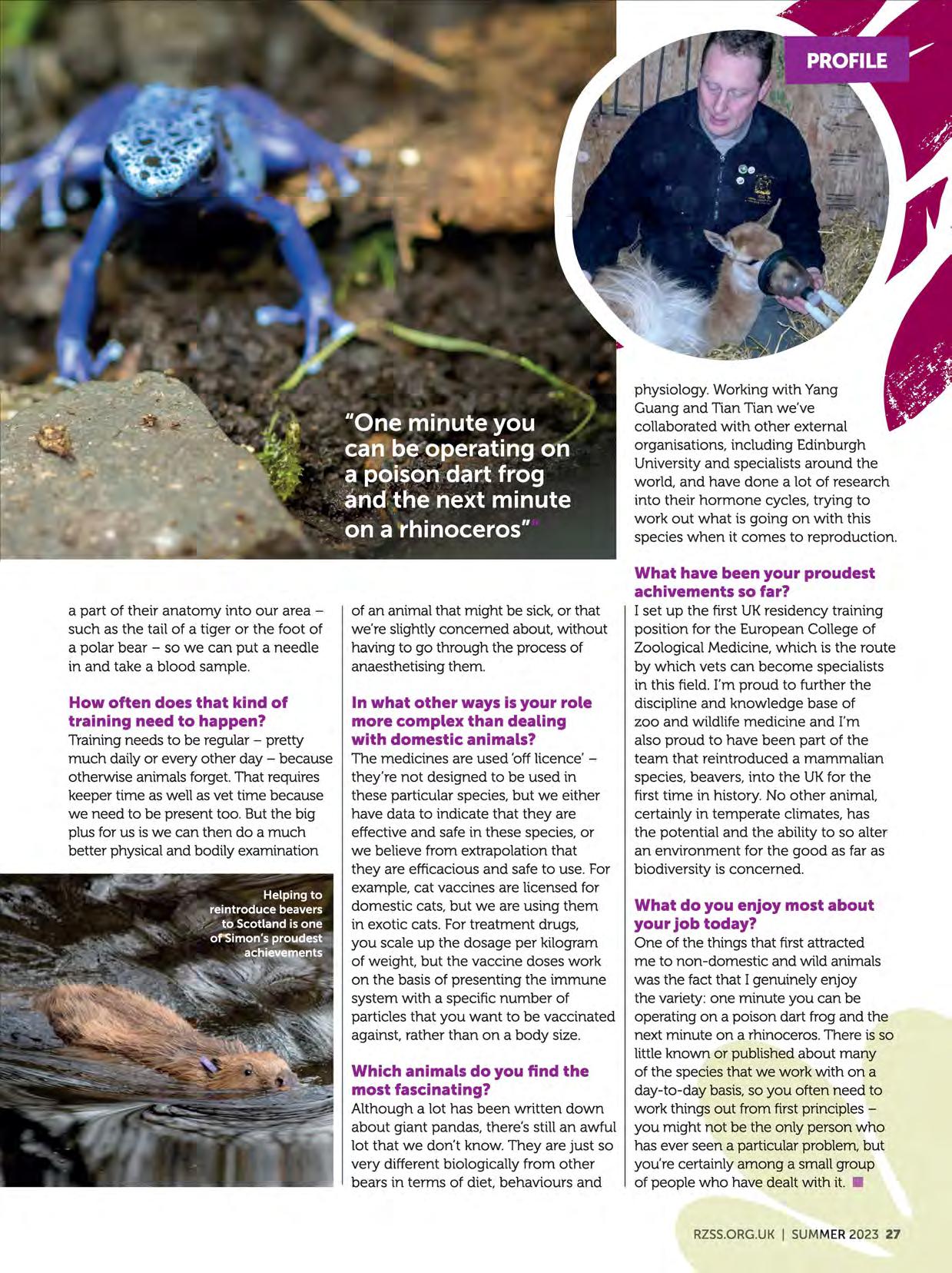
What do you enjoy most about your job today?
One of the things that first attracted me to non-domestic and wild animals was the fact that I genuinely enjoy the variety: one minute you can be operating on a poison dart frog and the next minute on a rhinoceros. There is so little known or published about many of the species that we work with on a day-to-day basis, so you often need to work things out from first principlesyou might not be the only person who has ever seen a particular problem, but you're certainly among a small group of people who have dealt with it.
Asour giant pandas' time in Edinburgh Zoo comes to an end, animal team leader Alison Maclean tells us about the popular male panda's daily routine
No one at Edinburgh Zoo knows the giant pandas better than animal team leader Alison Maclean. She has spent much of her working life over the past 12 years in their company, getting to know the pandas' very different personalities.
Female Tian Tian behaves more like a panda in the wild and enjoys her own company. Alison describes male Yang Guang as an easy-going panda who has been very special to work with.
"The first time I met him was in China. His keeper brought him into the panda house and I got to feed him," she remembers. "He pretty much ignored me and looked to his keeper, the person who worked with him all the time. I was just a stranger coming in. Over the course of that year I went back twice; the final time I spent a week pretty much all day every day with the pandas, so they were used to me being there."
Alison describes working with the pandas over the years in Edinburgh as a once in a lifetime opportunity.
"Doing training with Yang Guang, you build such a special bond and relationship when he trusts you enough to allow you to do things like heart monitoring and
stethoscope training. I don't only see that as an achievement, I think it's amazing that we've been able to create this bond of trust. That's been huge."
Learning all the little nuances of Yang Guang's personality and behaviour has given Alison a unique insight into the lives of giant pandas.
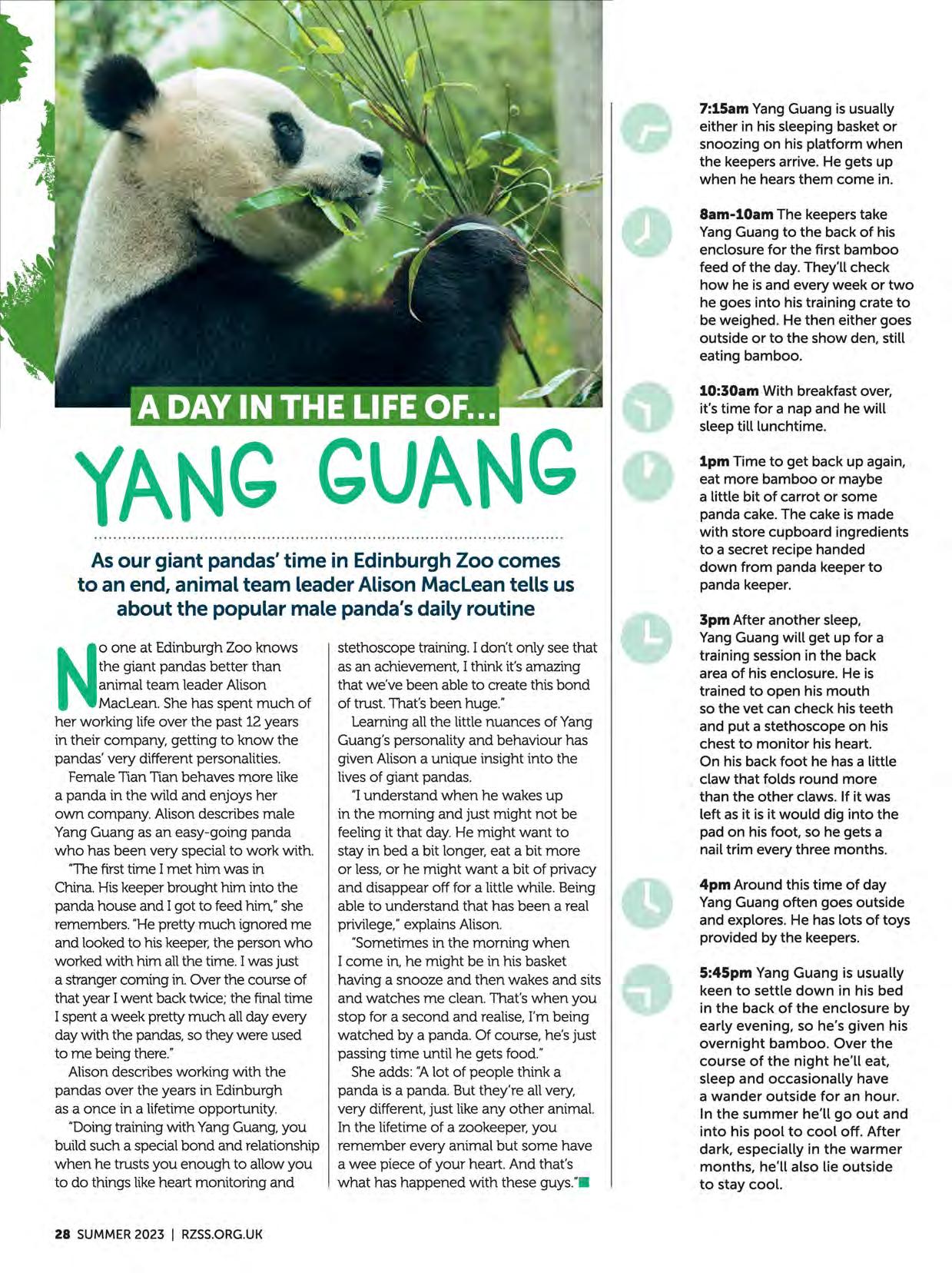
"I understand when he wakes up in the morning and just might not be feeling it that day. He might want to stay in bed a bit longer, eat a bit more or less, or he might want a bit of privacy and disappear off for a little while. Being able to understand that has been a real privilege," explains Alison.
"Sometimes in the morning when I come in, he might be in his basket having a snooze and then wakes and sits and watches me clean. That's when you stop for a second and realise, I'm being watched by a panda. Of course, he's just passing time until he gets food."
She adds: "A lot of people think a panda is a panda. But they're all very, very different, just like any other animal. In the lifetime of a zookeeper, you remember every animal but some have a wee piece of your heart. And that's what has happened with these
e 0 0 0 e 0
7:15am Yang Guang is usually either in his sleeping basket or snoozing on his platform when the keepers arrive. He gets up when he hears them come in.
8am-10am The keepers take Yang Guang to the back of his enclosure for the first bamboo feed of the day. They'll check how he is and every week or two he goes into his training crate to be weighed. He then either goes outside or to the show den, still eating bamboo.
10:30am With breakfast over, it's time for a nap and he will sleep till lunchtime.
1pm Time to get back up again, eat more bamboo or maybe a little bit of carrot or some panda cake. The cake is made with store cupboard ingredients to a secret recipe handed down from panda keeper to panda keeper.
3pm After another sleep, Yang Guang will get up for a training session in the back area of his enclosure. He is trained to open his mouth so the vet can check his teeth and put a stethoscope on his chest to monitor his heart. On his back foot he has a little claw that folds round more than the other claws. If it was left as it is it would dig into the pad on his foot, so he gets a nail trim every three months.
4pm Around this time of day Yang Guang often goes outside and explores. He has lots of toys provided by the keepers.
5:45pm Yang Guang is usually keen to settle down in his bed in the back of the enclosure by early evening, so he's given his overnight bamboo. Over the course of the night he'll eat, sleep and occasionally have a wander outside for an hour. In the summer he'll go out and into his pool to cool off. After dark, especially in the warmer months, he'll also lie outside to stay cool.
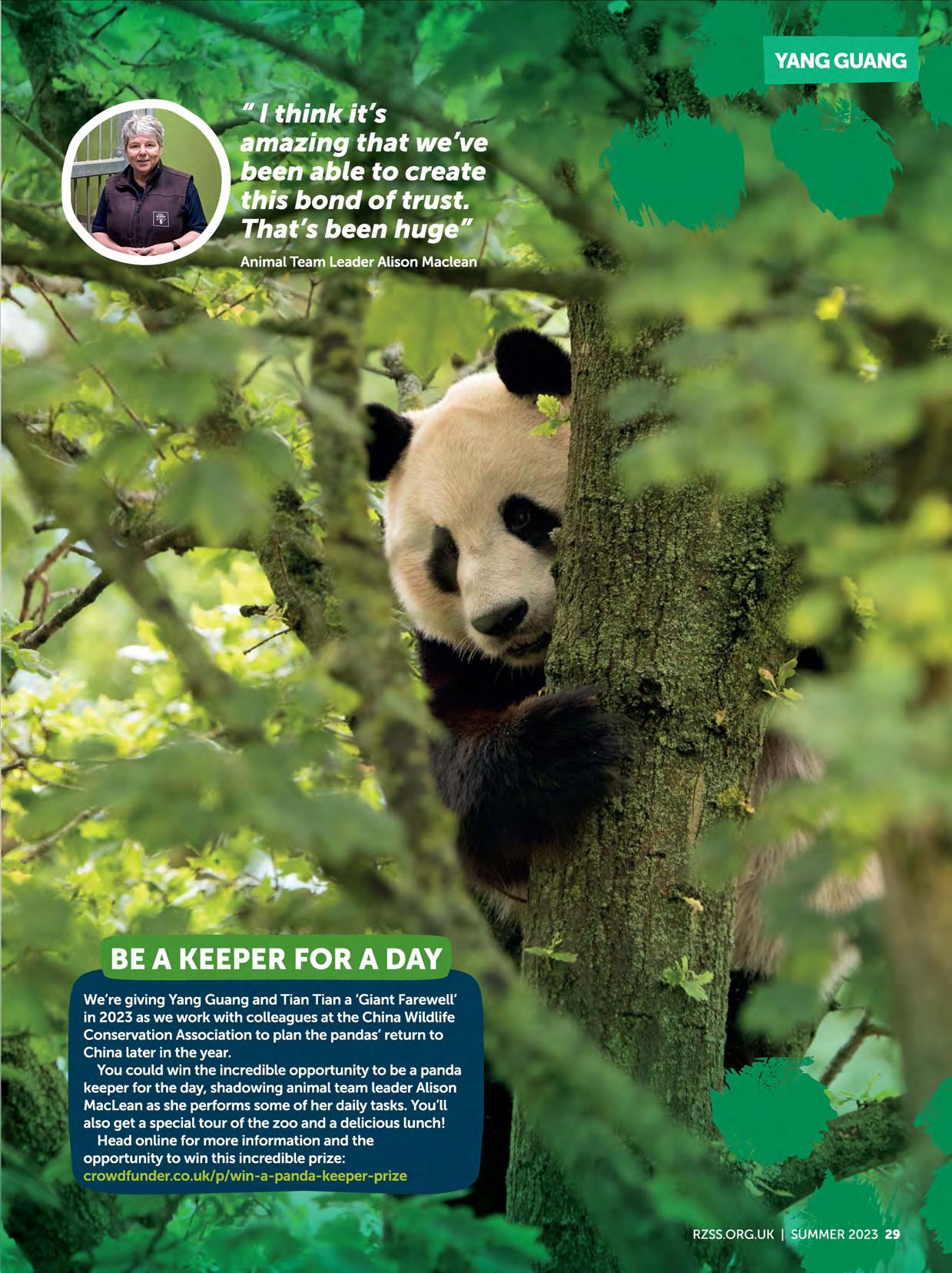
Journalist Rich Rowe learns how a pioneering study into the genetic diversity of capercaillie in the UK will help safeguard the future of a species whose time is fast running out
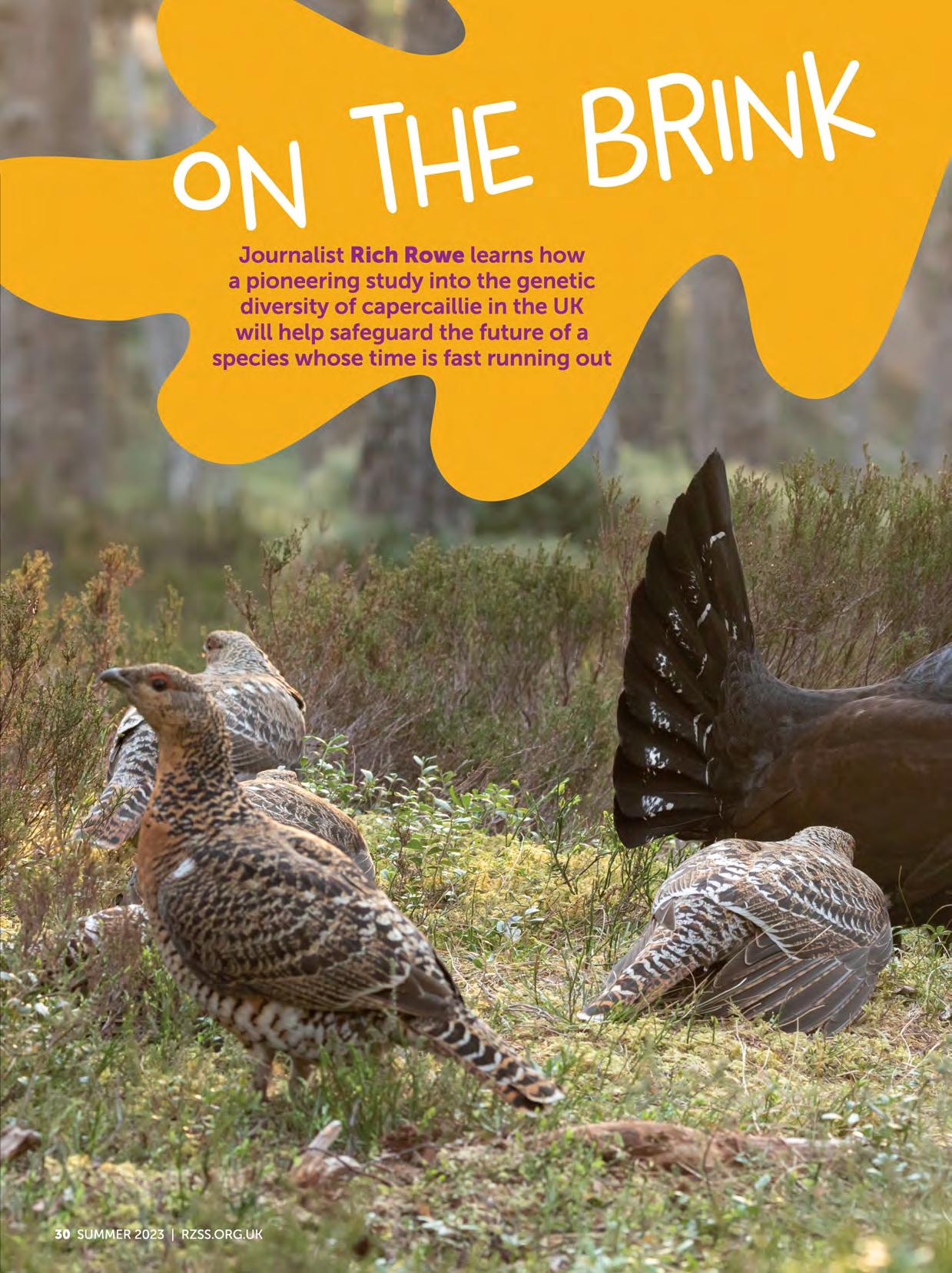
uch is their scarcity today that relatively few people have encountered a capercail\ie in the wild, but those who have rarely forget the experience. The largest grouse in the world, the male capercaillie's strutting courtship display, all fanned tails, fluttering jumps and an extraordinary repertoire of guttural pops, wheezes and whistles, is one of nature's great spectacles.
A pine forest specialist, known in Gaelic as 'the Horse of the Woods', this turkey-sized bird once had a range that extended from the UK and Scandinavia to the great boreal forests of Siberia, and south across mountainous forest regions of Europe.
Even as recently as the 1970s, the UKwas home to around 20,000 capercail\ie, but today that picture looks very different. Now confined to only a few corners of Scotland, it is believed that there are fewer than 600 birds left in the wild -with an estimated 85% of that population found in the Cairngorms National Park. It is here, in the capercaillie's last remaining UK stronghold, that a fresh initiative was launched in 2018 to turn the bird's fortunes around. Funded by the National Lottery Heritage Fund and led by the Cairngorms National Park Authority, the five-year Cairngorms Capercaillie Project has successfully mobilised a coalition of local communities, including mountain bikers, dog walkers, businesses, land managers, conservation charities and government agencies to come together on behalf of the capercail\ie.
There have been a range of actions, including community engagement and awareness, habitat improvement, predator control and improved monitoring of populations, that together aim to help arrest the decline of a species on the brink of extinction, while also laying the groundwork for securing its long-term future.
"There is no silver bullet here, so what we've done is bring people together to pull in the same direction," explains Carolyn Robertson, project manager, Cairngorms Capercaillie Project.
The reasons behind the capercaillie's alarming decline are various, although one of the primary issues has been loss of habitat. This is a bird with very particular needs -ideally Scots pinedominated woodland, with open areas in which to feed and dense areas for cover.
Sadly, the loss and fragmentation of this habitat has increased the likelihood of predation and disturbance. During the breeding season, this can lead to nests or young being abandoned.

Add in collisions with deer fences and greater incidences of cold, wet springs when capercaillie chicks are most vulnerable, and the challenges are stacking up.
The good news is that science is now informing capercaillie conservation as never before. For the past three years, the Caimgorms Capercaillie Project has worked with the RZSS WildGenes laboratory at Edinburgh Zoo on a study of capercaillie DNAto help reveal the genetic diversity of the birds left in Scotland.
Genetic diversity is a key metric in a species· ability to adapt and survive, and maintaining and restoring it is especially important in populations that have undergone dramatic declines.
"Our research will help identify whether we need to consider measures that help expand the gene pool to aid the long-term survival of capercaillie in the UKrather than simply increasing numbers," explains Dr Alex Ball,RZSS WildGenes programme manager.
For many species, DNAcan be gathered by capturing individuals and taking blood, but that's just not possible with a species as susceptible to disturbance as the capercaillie. The project team instead came up with a non-invasive collection technique that saw keepers, stalkers, foresters, rangers and ecologists collect more than 1,000 dropped feathers from the forest floor outside of the breeding season and send them to the RZSSWildGenes team at Edinburgh Zoo for analysis.
Starting from when the feathers were first collected in 2019, genomics
Above and below: Both feathers and droppings are collected for analysis
Below, left: Extracting DNA in the RZSS WildGenes lab
For smaller feathers, the whole of the calamus -the hollow inner portion of the shaft that attaches to the skin -and the majority of the shaft were used.
•••••••••••••••••••••••••••••••••••••••••••••••••••••••• Sequencing reads technician Jal Ghazali extracted and recorded the genetic data from the samples provided. It was painstaking work, in part because of the difficulty of extracting DNAfrom feathers but also because of how degraded much of that DNAhas become.
"Many of the feathers had been lying on the ground for a long
time, so were old and mouldy," explains Jal.
"Unfortunately, there are two things that are really bad for DNA: damp and ultraviolet light. This means that the longer the samples have been sitting on the forest floor, the more degraded the DNAbecomes."
For large feathers, Jal used a scalpel to open the quill shaft and then scrape the inside to collect as much uncontaminated material as possible.
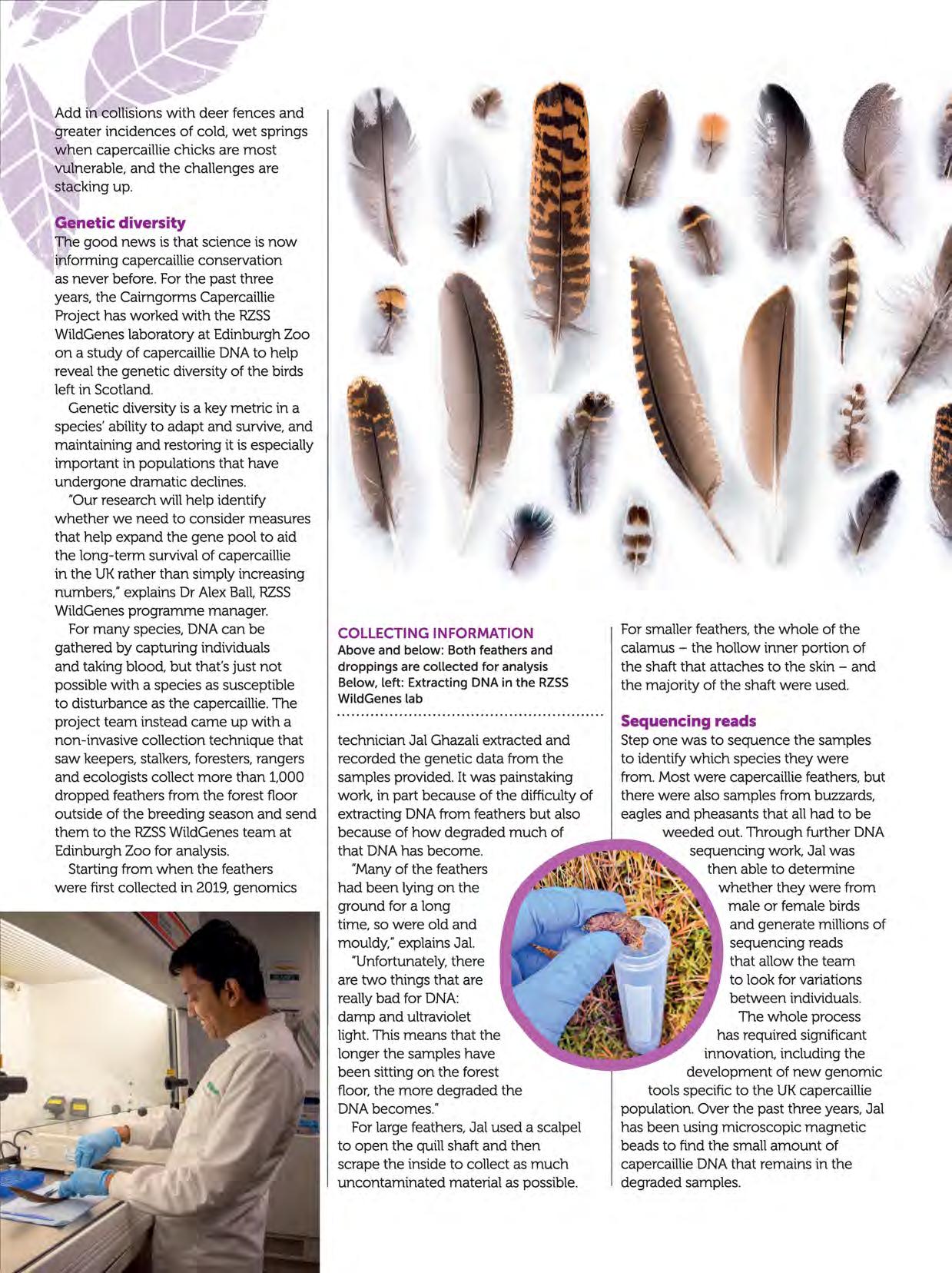
Step one was to sequence the samples to identify which species they were from. Most were capercaillie feathers, but there were also samples from buzzards, eagles and pheasants that all had to be
weeded out. Through further DNA 1 sequencing work, Jal was :IN,~ \\ f. _;:., then able to determine ,, r,_ whether they were from
• • -1 male or female birds and generate millions of sequencing reads that allow the team to look for variations between individuals. The whole process has required significant innovation, including the development of new genomic tools specific to the UKcapercaillie population. Over the past three years, Jal has been using microscopic magnetic beads to find the small amount of capercaillie DNAthat remains in the degraded samples.
But the research does not just involve Scottish birds, or even only those alive today. Keen to include a comparison with capercaillie from elsewhere, samples were also obtained from populations across Europe -including from Sweden, Poland, Germany and the French Pyrenees -many of which are also seeing a decline in numbers.
This comparative approach has helped researchers to not only identify genetic differences between capercaillie in the UKand elsewhere but also to produce genetic tools that are more widely applicable.
"While our work is directly focused on the capercaillie population in Scotland, our genetic research will also help us to create tools to study other populations across Europe," notes Alex Ball.
To complete the genetic research puzzle, the WildGenes lab also worked with samples from historic specimens preserved for display in private collections and museums both here in the UKand from overseas.
Significantly,some samples came from Sweden's Museum of Natural History in Stockholm. Capercaillie have become extinct in the UKonce before -in the 18th century -with the species subsequently reintroduced using birds translocated from Sweden. Unsurprisingly, the early signs are that such ancestry ensures a close genetic match between the Scottish population and Swedish birds today.
Obtaining DNAsamples from historic specimens has come with its own challenges. "When specimens are first preserved, various chemicals that badly degrade DNA can be used in the process," explains Alex."So,for these birds we took samples from the toe pads on the bottom of their feet where DNA usually still remains."
Having collected one of the largest genetic data sets of any RZSSWildGenes project to date, the task now is to process and analyse that data ahead of presenting findings to the Cairngorms Capercaillie Project this year.
"We've been analysing data for about five months now, using a high performance computer at the zoo that can take weeks to churn through millions of genetic reads," says Alex.
To date, all feather, blood and tissue samples from across Europe have
been sequenced and are now being combined. "Patterns are emerging but it's all very preliminary at the moment. There are potentially two genetic clusters in Scotland but it is not yet obvious what is causing that structure."
Once the final reports have been prepared, complete with conservation recommendations, it is over to the Cairngorms Capercaillie Project to share the findings and combine all
strands of work for future decisions on the need for and feasibility of species reinforcement.
"Our work now is about understanding all that has surfaced through the genetic research and how that feeds into a Capercaillie Emergency Plan that will provide ongoing and increased support for capercaillie in the Cairngorms, based on the best available evidence," explains Carolyn. "That plan will be the legacy of the project."
Led by the Cairngorms National Park Authority and NatureScot, this next crucial phase for capercaillie will continue to be a shared endeavour. "It will involve project partners to date and new ones too as we ensure critical action for capercaillie continues on all fronts, quickly and at scale," Carolyn adds.
"Andunderstanding the conservation genetics side of this journey we've all been on will be a key part of ensuring the long-term survival of Scotland's capercaillie."
For more on the Cairngorms Capercaillie Project, visit cairngormscapercaillie.scot
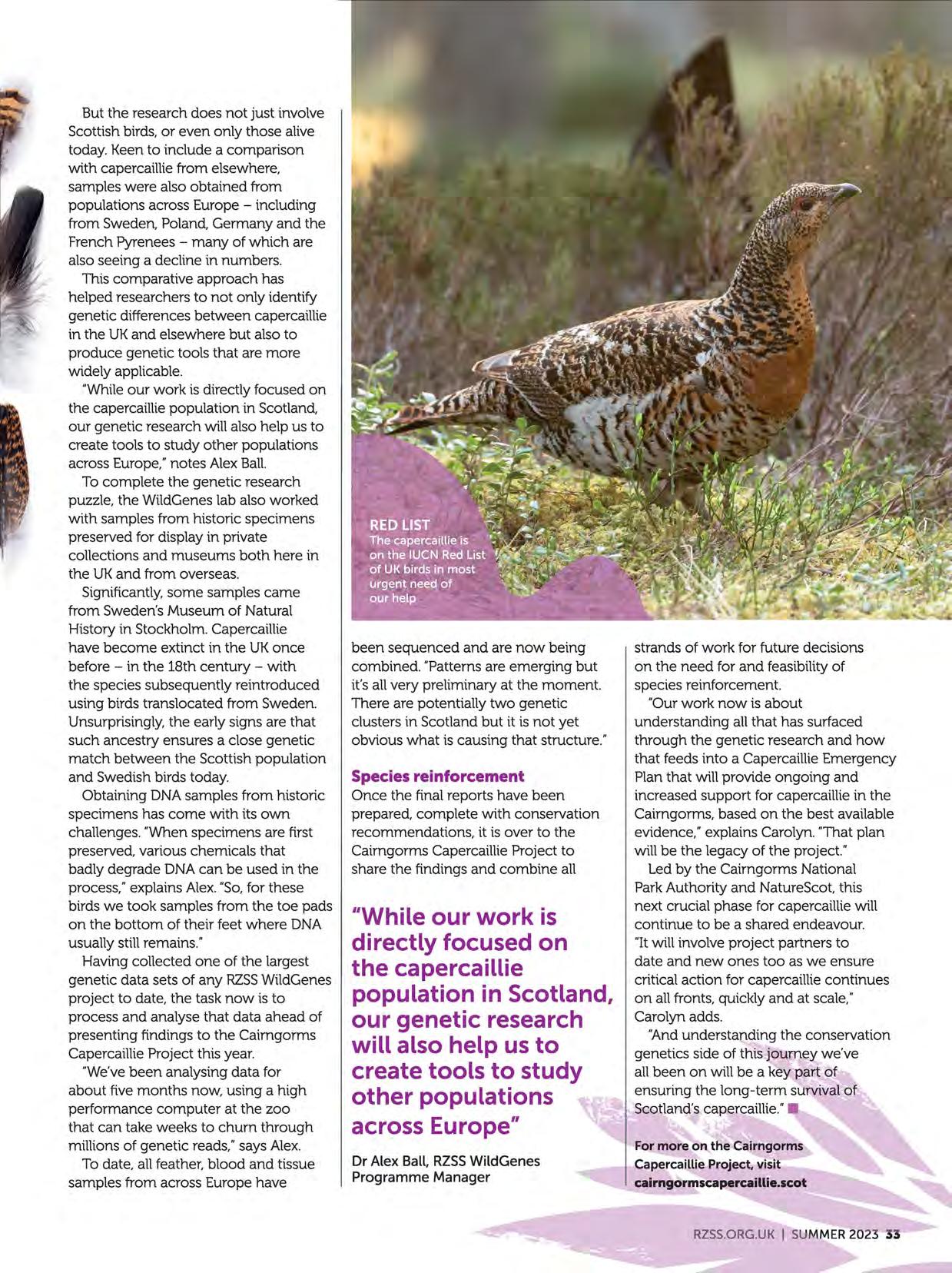
"While our work is directly focused on the capercaillie population in Scotland, our genetic research will also help us to create tools to study other populations across Europe"
Dr Alex Ball, RZSSWildGenes Programme Manager
Edinburgh Zoo is home to four western grey kangaroos: Hemsworth, Jackman, Mia and Rebel. Make sure to head to Wallaby Outback on your next visit for a chance to catch sight of them.
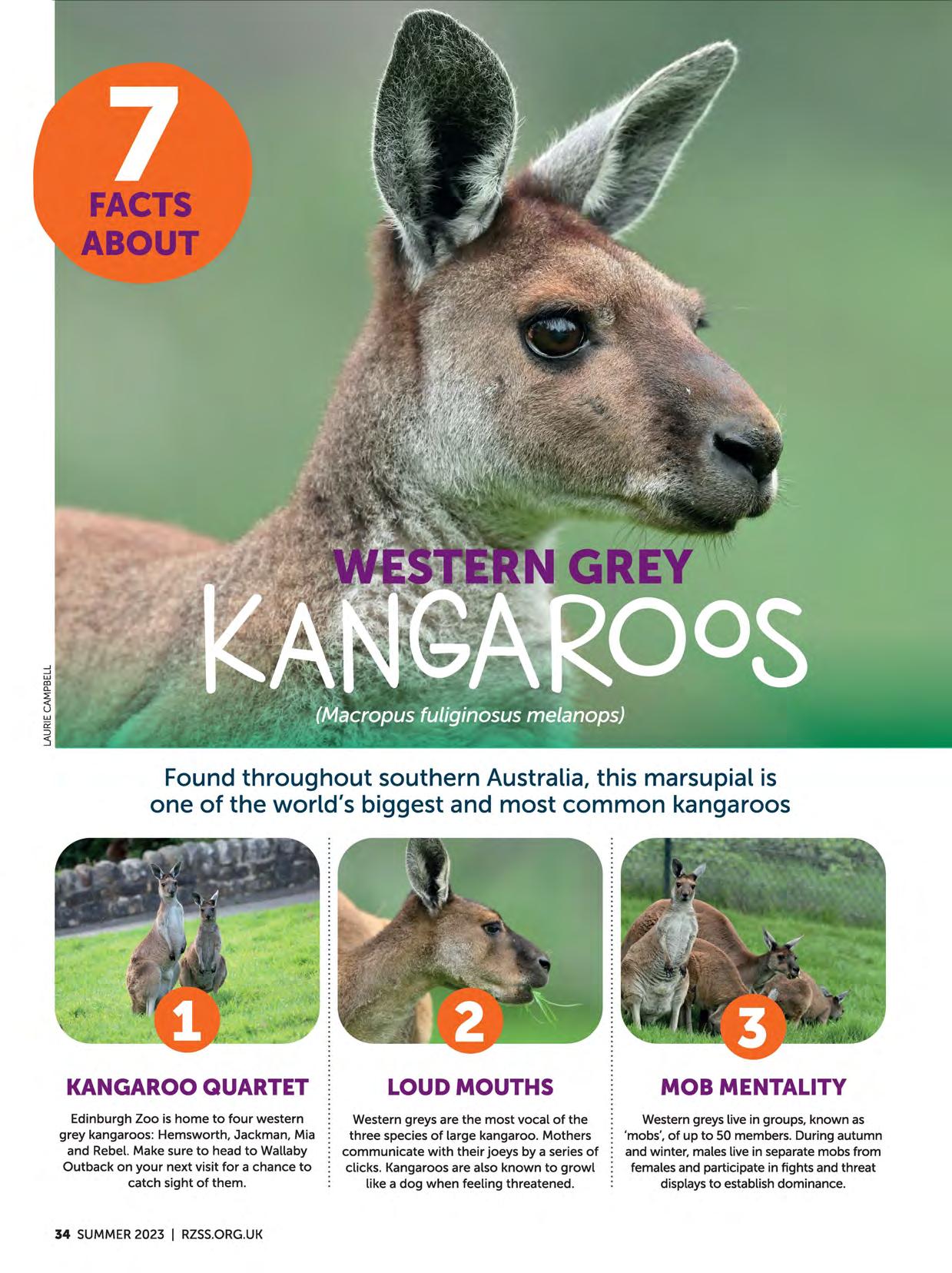
Western greys are the most vocal of the three species of large kangaroo. Mothers communicate with their joeys by a series of clicks. Kangaroos are also known to growl like a dog when feeling threatened.
Western greys live in groups, known as 'mobs', of up to 50 members. During autumn and winter, males live in separate mobs from females and participate in fights and threat displays to establish dominance.
Found throughout southern Australia, this marsupial is one of the world's biggest and most common kangaroos
Nicknamed 'stinkers' due to their pungent smell, males can reach a height of over 2.2m compared to 1.7m for females. Male kangaroos have longer and more muscular shoulders and forearms, heavier claws and thickened skin over their stomach which helps them absorb the impact of kicks when fighting.
Gestation for western greys lasts just 30 days. After this, the tiny newborn climbs through its mum's fur and into the forwardfacing pouch, where it attaches to one of four teats. Joeys stay here for eight months. After emerging from the pouch, they continue to feed on their mother's milk until 17 months old.
During the breeding season male kangaroos compete for female attention via 'boxing matches' where they lock forearms and attempt to push one another over. Typically, only the dominant champion will have first chance to mate with females in the mob.
The western grey kangaroo's powerful rear legs enable them to clear over 9m per bound and reach speeds of up to 54kmph, while their long tails help maintain balance. A physical adaptation prevents their feet from rotating sideways, so they don't twist their ankles.
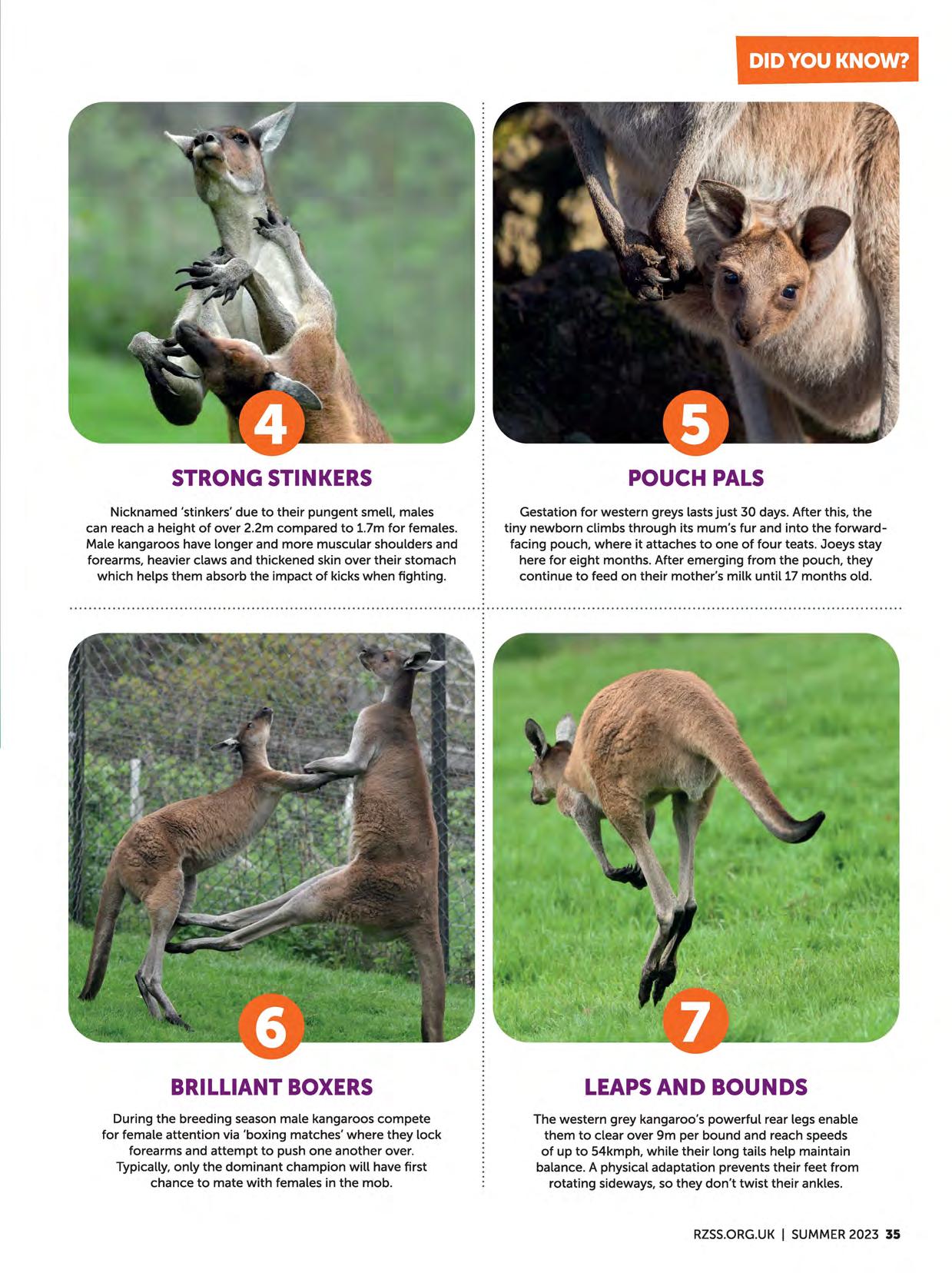
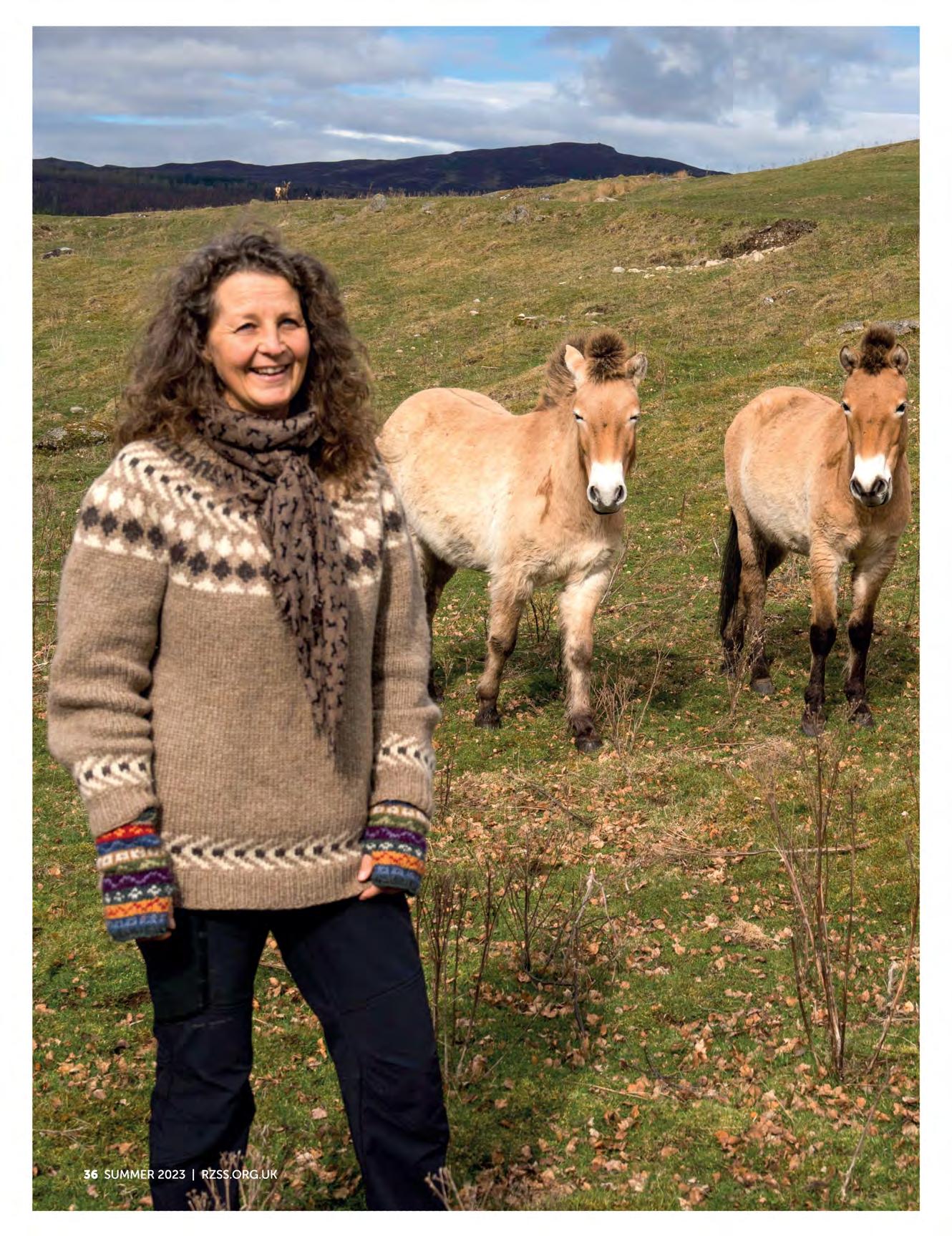
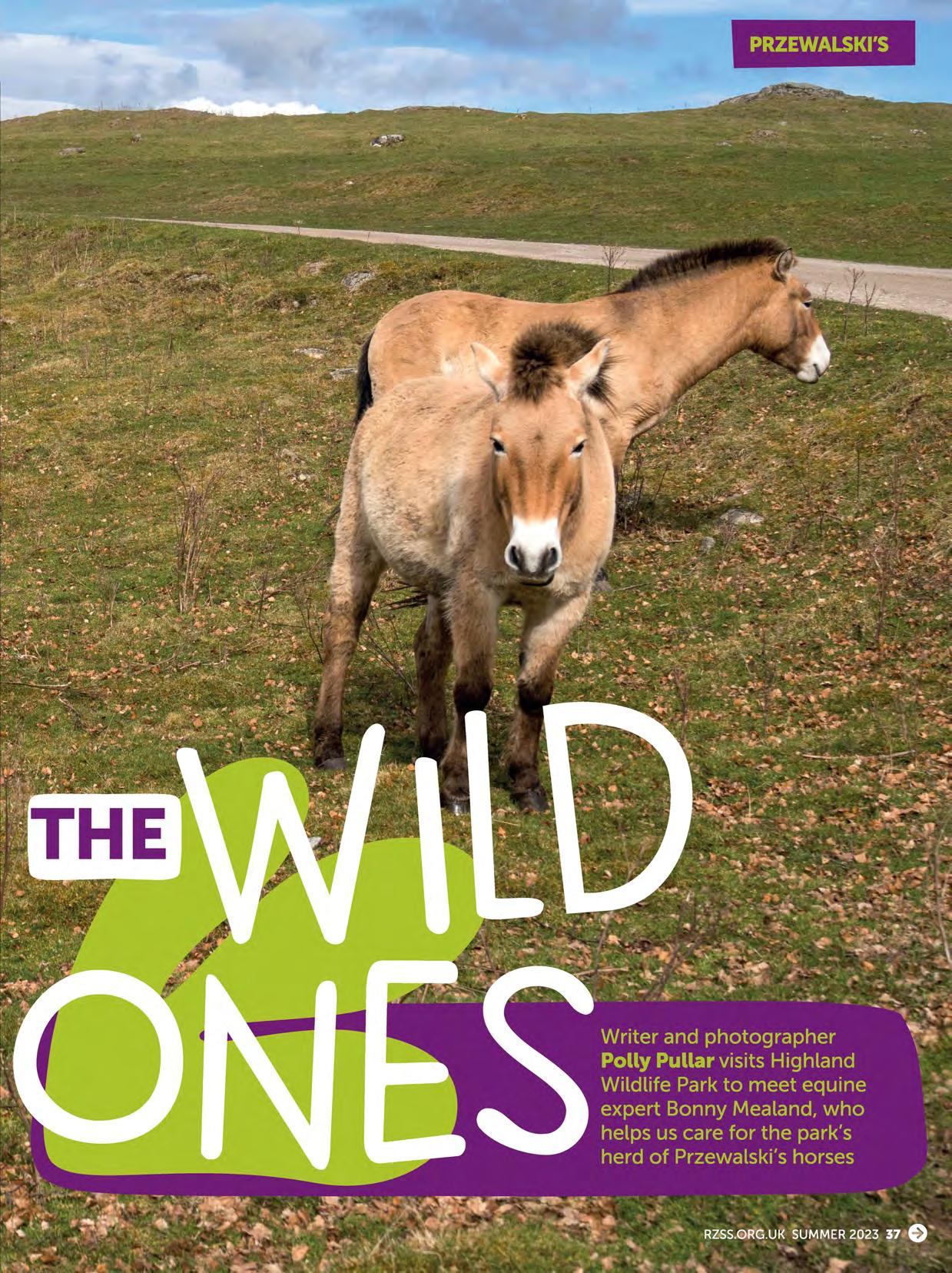
It's hard not to feel emotional watching equine expert Bonny Mealand working harmoniously with the beautiful yellow dun Przewalski's horses at Highland Wildlife Park. Small, stocky and primitive, with short, bristly dark manes and little or no forelock, an eel stripe running down their backs and dark legs featuring zebra stripes, even these wild horses' aroma is unique. And as you absorb the heart-rending story of the world's last truly wild horses and realise how dangerously close they came to vanishing off the face of the Earth, little wonder emotion comes to the surface.
Bonny, who has an entirely holistic approach, is a founder member of the Equine Podiatry Association (EPA) and is a qualified equine podiatrist. As she quietly gains the horses' trust, I instantly recognise this is not merely
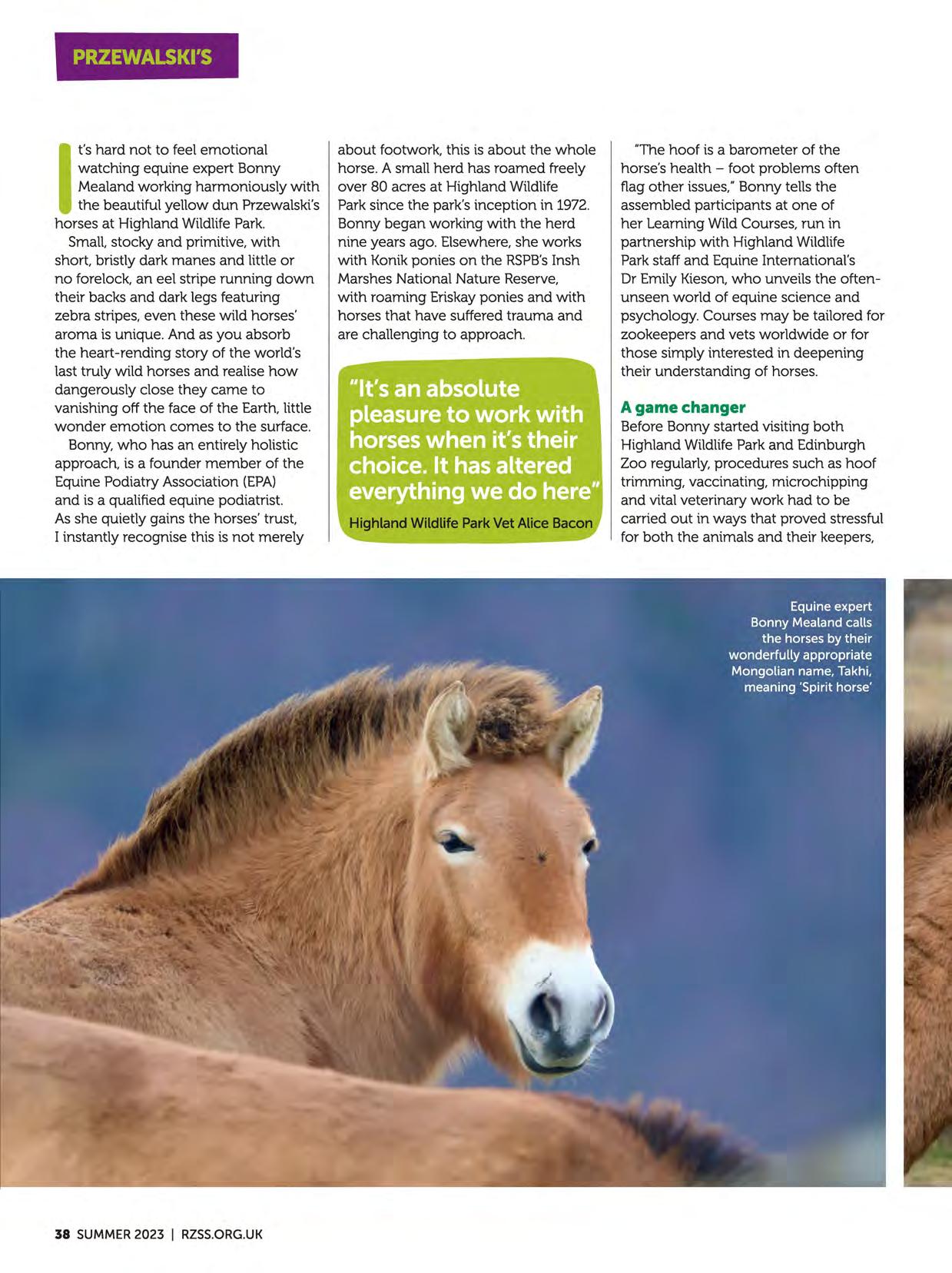
about footwork, this is about the whole horse. A small herd has roamed freely over 80 acres at Highland Wildlife Park since the park's inception in 1972. Bonny began working with the herd nine years ago. Elsewhere, she works with Konik ponies on the RSPB'sInsh Marshes National Nature Reserve, with roaming Eriskay ponies and with horses that have suffered trauma and are challenging to approach.
"The hoof is a barometer of the horse's health -foot problems often flag other issues," Bonny tells the assembled participants at one of her Learning Wild Courses, run in partnership with Highland Wildlife Park staff and Equine International's Dr Emily Kieson, who unveils the oftenunseen world of equine science and psychology. Courses may be tailored for zookeepers and vets worldwide or for those simply interested in deepening their understanding of horses.
Before Bonny started visiting both Highland Wildlife Park and Edinburgh Zoo regularly, procedures such as hoof trimming, vaccinating, microchipping and vital veterinary work had to be carried out in ways that proved stressful for both the animals and their keepers,
and often meant darting or sedation with all the inherent risks involved. Bonny·s approach has been gamechanging and highlights the importance of bringing in outside experts to further the conservation causes of RZSSwhile improving the welfare of animals in their care.

Approximately 2,000 Przewalski's horses remain worldwide, sparsely scattered between crucial zoo conservation projects and a small population returned to their native home on the vast sweeping Asian Steppes during the 1990s. Before that, they were extinct in the wild.
The horses were first discovered and described scientifically in the late 19th century by Russian explorer Nikolay Mikhaylovich Przewalski. Bonny uses their Mongolian name, Takhi (Spirit horse) -appropriate given that they 0
have holy significance and are held in high esteem, which doubtlessly contributed to their survival.
The success of rebuilding a viable population from a tiny gene pool of only 13 founder animals, carefully chosen for their genetic diversity, is due to a few tenaciously dedicated humans who understood that these horses would be relegated to history books without intervention. Ironically their devastating decline was also due to human actions -habitat loss, hunting, hybridisation with domestic horses, and the obsessive collecting trips of westerners eager to have them for their fanciful collections. Most captured animals, including foals cruelly taken
from their mothers, died of stress, illness or injury.
"Takhi are wild and will always be wild," explains Bonny. "They are different -astute, strong-willed, quick-thinking, they make their own decisions and have survived through self-selecting the traits that keep them alive in a hostile
environment. After thousands of years of selective breeding to suit the fads of each era, domestic horses are now bred to have tameable natures and other traits we desire. Not so the Takhi -for example, they have 66 chromosomes while domestic horses only have 64, and their nature will always be that of a free spirit.
"Even the most challenging domestic horse will never equal the determination of a Takhi. Everything we do with them has to be on their terms. If they don't want to do something, then we will walk away and try on another day. It's refreshing working with horses in true partnership."
To facilitate this ongoing work, the Highland Wildlife Park horses can enter into a large, open enclosure if they choose to do so. Here, I witness a peaceful interaction as Bonny and Becky Pink, senior hoofstock keeper, chat quietly with horses and a small group of fascinated participants attending a course at the park.
Bonny undoubtedly has a gift but says: "Anyone can learn how to rethink and recalibrate an approach built on trusting relationships viewed from an equine perspective. It's safe and largely stress-free. Now we care for the Takhi in a manner that makes sense to them. I listen and respond and have no agenda, but my presence close to them sparks their curiosity and gives them the time to explore. We don't bribe them with food. Instead, they come to their keepers and me and love it when we scratch them on their terms. It's enjoyable for us all."
Two mares and a yearling with expressive ears come to nuzzle Bonny and Becky as we talk. The others are relaxed, wandering around grooming one another and eager to join the action. Consistent patience and kindness have led to them allowing Bonny to pick up their feet for trimming.
"Aswell as their physical health, it's vital to tend to their social and cognitive wellbeing too," she says. "It's to step outside our human-centric view and understand how they live peacefully in a herd. I like to envisage a world where

"We don't tame, we trust, and there are no timelines, no expectations, no rush"
Senior Hoofstock Keeper Becky Pink
all equines are recognised and valued for their innate worth and have freedom of expression, and the people caring for them act from a place of integrity, consideration and balance."
Becky Pink has been caring for the wild horses at Highland Wildlife Park for 15 years. "I like to think we do the very best we can for the animals while they are in our care. We are lucky to have the luxury some days to spend ample quiet time with them. We don't tame, we trust, and there are no timelines, no expectations, no rush. We build bonds enabling us to carry out necessary work when required. Learned behaviours filter down through the generations.
"We couldn't have done this without Bonny, nor the support of RZSS management, vet team and team leader. We continually learn vital ways to gently move forward."
Park vet Alice Bacon agrees, "It's an absolute pleasure to work with horses when it's their choice. It has altered
everything we do here, not only for the Przewalski's but also for other animals and us."
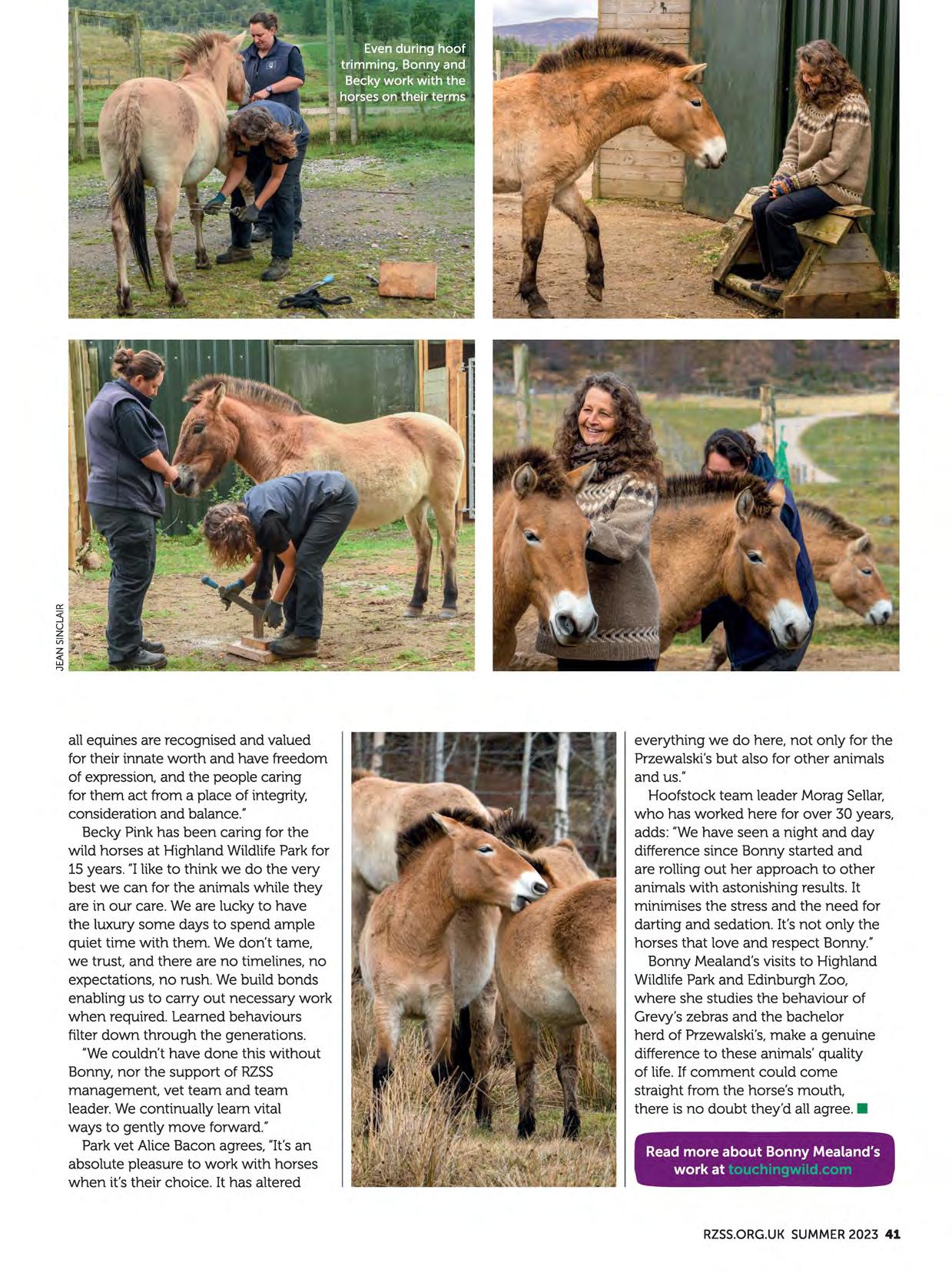
Hoofstock team leader Morag Sellar, who has worked here for over 30 years, adds: "We have seen a night and day difference since Bonny started and are rolling out her approach to other animals with astonishing results. It minimises the stress and the need for darting and sedation. It's not only the horses that love and respect Bonny."
Bonny Mealand's visits to Highland Wildlife Park and Edinburgh Zoo, where she studies the behaviour of Grevy's zebras and the bachelor herd of Przewalski's, make a genuine difference to these animals' quality of life. If comment could come straight from the horse's mouth, there is no doubt they'd all agree.
Read more about Bonny Mealand's work at
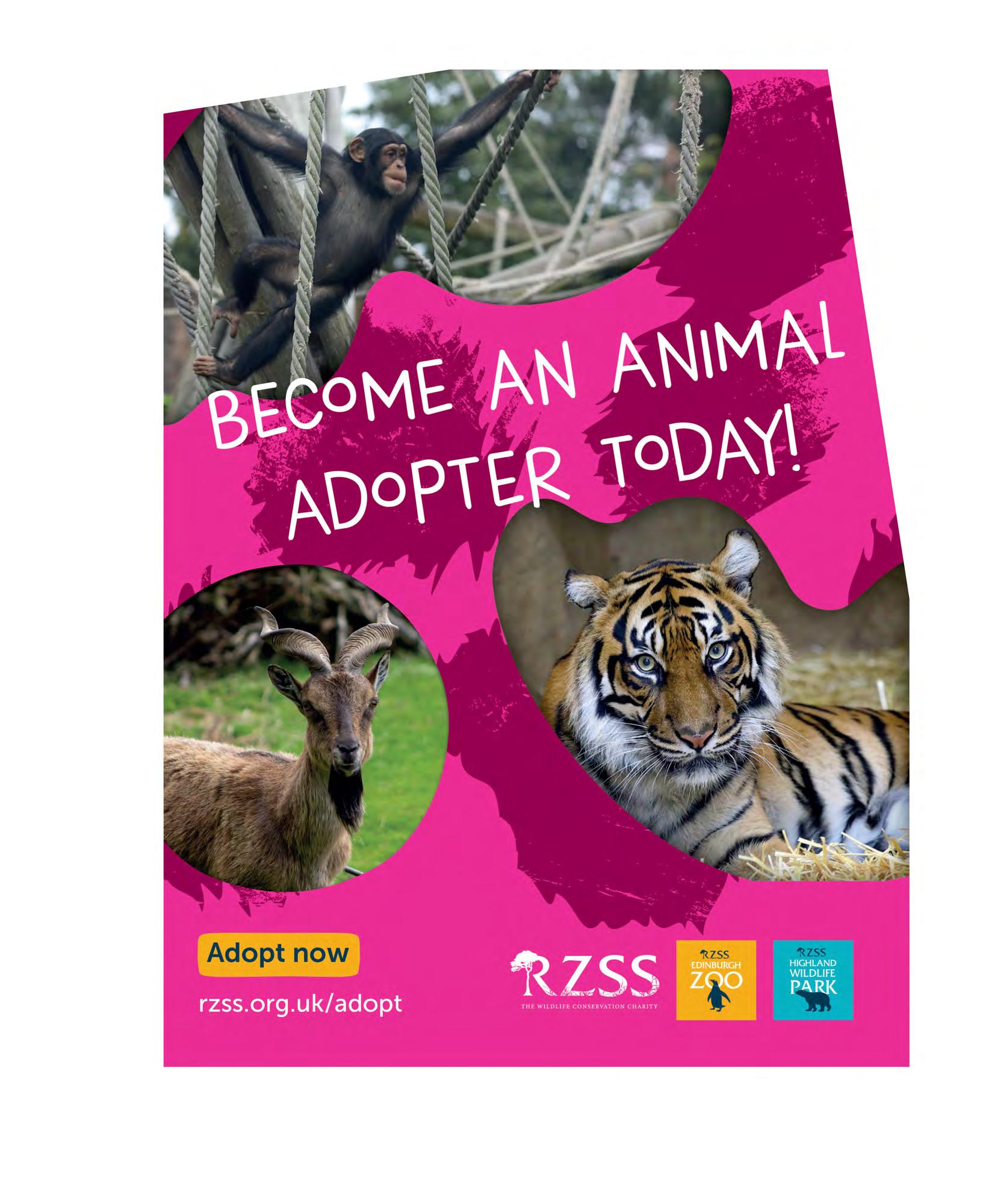
Edinburgh Zoo
8, 15 and 22 July 5pm-9pm
Experience the zoo as the sun sets and enjoy late night access at a reduced rate. Don't miss out, as all tickets are subject to availability! Those visiting during the day are welcome to stay into the night.
Adult £15/Adult member free
Child £10/Child member free
To book: edinburghzoo.org.uk/ sundownsaturdays
Edinburgh Zoo
ti41•1ffll'I
Join us for a week of all things poo! With plop-up events and activities all week, you'll be challenged to match species to faeces, create splat-tastic poo and goo and find out just how valuable our animal dung really is!

Included in admission price/ free for members
Edinburgh Zoo t..J••M•ifili.3pm-5pm
Join us for a family fun, teddy bear themed picnic afternoon tea this August at the mansion house garden and lawn. Indulge in Britain's favourite pastime while your little ones are kept occupied with activities including their very own teddy bear vet check!
Adult £37/Adult member £25
Child £30/Child member £18
To book: edinburghzoo.org.uk/teddy-bears
t..J•lffll6pm-8:30pm
This July, join us and Glenmorangie in our Lemur Lodge to sample their finest whisky and to hear a talk from world leading giraffe expert and Giraffe Conservation Foundation (GFC) founder Julian Fennessy.This is an event for participants aged 18+ only.
RZSSis working in partnership with Glenmorangie and GCF to conserve giraffes in Africa, particularly Uganda and Kenya. Through conservation science and genetic expertise, the partnership continues to be a source of positive news for giraffe conservation.
Adult £25/Adult member £20
Zoo entry and event £40
To book: edinburghzoo.org.uk/ wild-for-whisky
Edinburgh Zoo
6 and 7 July, 3 and 4 August, 9 and 10 October
These full-day workshops from wildlife photographer Laurie Campbell include tutorials as well as a tour of Edinburgh Zoo, taking in a number of different settings and animals big and small.
£155/Member and patron £140
To book: edinburghzoo.org.uk/ photography
Edinburgh Zoo
EE!ll!Jl9am-1pm
This workshop is tailored for budding photographers aged 11-15, with expert wildlife photographer Laurie Campbell helping them to develop their image-making skills.
£85/Member £78
To book: edinburghzoo.org.uk/ juniorphotography

Edinburgh Zoo
3, 10 and 17 September 3pm-5:30pm
We love spiders at RZSS-but we recognise that not everyone does! Based on our previous 'Spiders: Fight Your Phobia' workshop, we have refreshed and re-worked this interactive session to help people overcome their spider fear in a friendly, relaxed and supportive atmosphere. There are three sections -theory, mindfulness, practical catch and release -all aimed at boosting your comfort levels around our arachnid friends.
Adult £85/Member £75
To book: edinburghzoo.org.uk/creep-calm
Edinburgh Zoo
Chapterhouse Theatre Company are returning this summer with their popular productions of Sense and Sensibility and The Secret Garden
ml!l1'JDoors open from 6:15pm. The performance begins at 7pm and ends at 9:30pm Enjoy a night of magical theatre as Elinor and Marianne Dashwood make their first forays into the world of Regency society. Based on Jane Austen's timeless classic, Sense and Sensibility follows the Dashwood sisters as they experience true love and heartbreak for the first time.
Adult £18.50/Adult member £17
Child £11.50/Child member £10
To book: edinburghzoo.org.uk/ sense-and-sensibility
iliE!illlibUuoors open from 6:15pm. The performance begins at 7pm and ends at 9:30pm
Join Mary Lennox as she travels to her uncle's house in the Yorkshire countryside, where new friends and animals help her unlock the mystery of a secret garden. Alive with music and song and featuring an array of especially designed creatures, The Secret Garden promises an unforgettable evening.

Adult £18.50/Adult member £17
Child £11.50/Child member £10
To book: edinburghzoo.org.uk/the-secretgarden
Get tips for your next trip and a souvenir to remember the animals you love
The brand new official Edinburgh Zoo guidebook is out now! Available from the Edinburgh Zoo gift shop and our online store, the guidebook includes detailed animal information, tips from our keepers, fun facts about the zoo

and insights into our conservation work around the world. Priced at £5, the AS-sized guidebook has 48 pages packed full of colourful facts and pictures. Choose between a king penguin or giraffe-themed cover.
RZSSmembers are entitled to 10% off in our gift shops -just show your membership card at the payment desk. Or use the code MEMBER10 to claim your discount at shop.rzss.org.uk
Catherine Redgate's charming illustrations of animals from our parks feature on a range of products, including some wonderful designs exclusive to RZSS.
Visit the Highland Wildlife Park gift shop for designs featuring snow leopards, tigers, polar bears, wildcats and wolves, all printed on Catherine's ever-popular, multi.purpose headwear, as well as on bottles, mugs and more. And Edinburgh Zoo has cards, lens cloths, notebooks and other great products with sloth, otter, giant panda and penguin designs.
Catherine studied at Gray's School of Art i.n Aberdeen and has been selli.ng her beautifully illustrated range of gifts since 2018. The products are nearly all printed in the UK and many of them in Scotland, including her tote bags, tea towels, lens cloths and eco jotters -all printed by Southfield Stationers i.n Musselburgh.
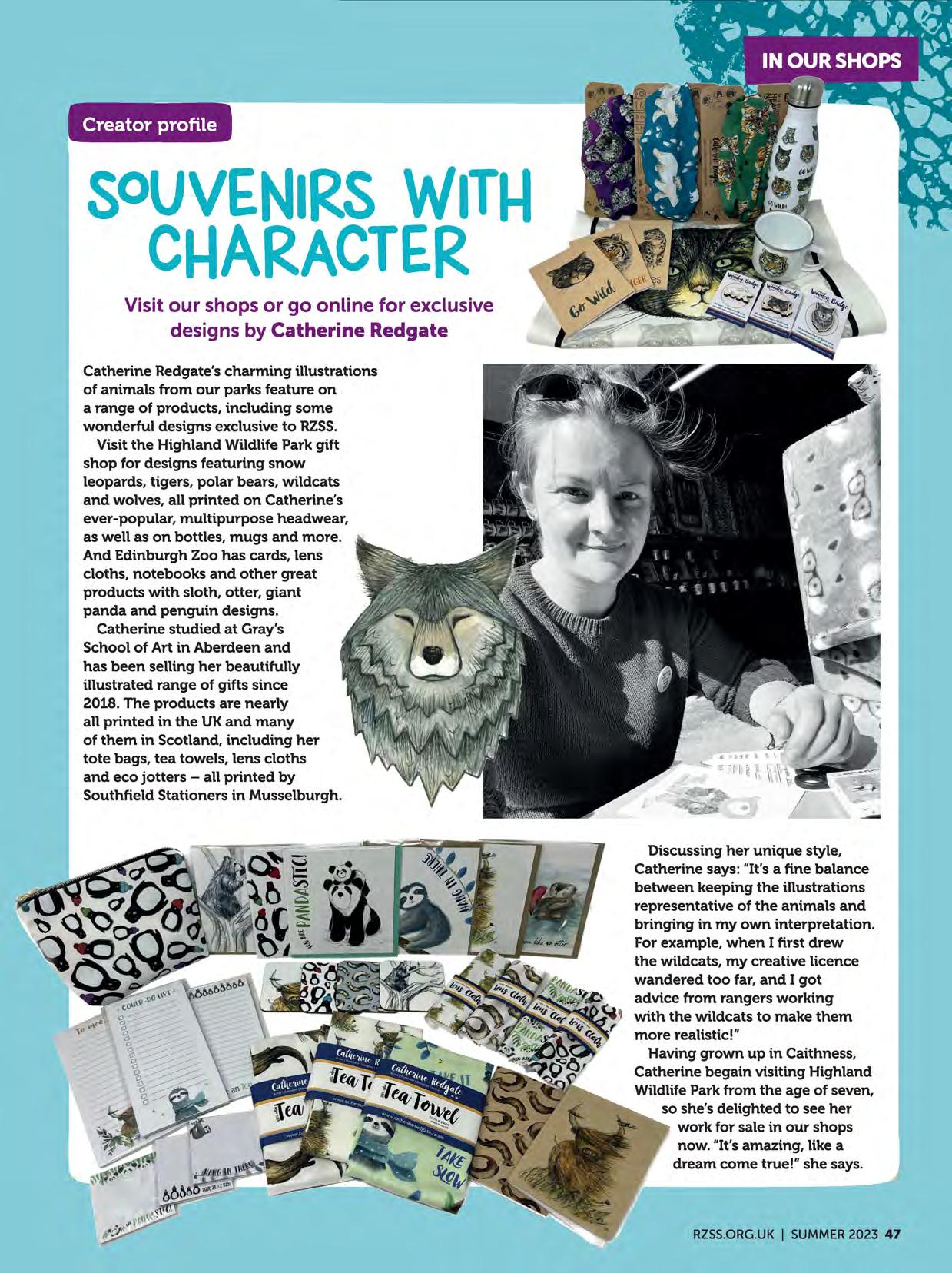
Discussing her unique style, Catherine says: "It's a fine balance between keeping the illustrations representative of the animals and bringing in my own interpretation. For example, when I first drew the wildcats, my creative licence wandered too far, and I got advice from rangers working with the wildcats to make them more realistic!"
Having grown up in Caithness, Catherine begain vi.siting Highland Wildlife Park from the age of seven, so she's delighted to see her work for sale i.n our shops now. "It's amazing, like a dream come true!" she says.
 To see our Luxury Harris Tweed living range visit Mozolowski & Murray's Edinburgh Design Centre, 57 Comiston Road, Morningside, EHl0 6AG. Open 7 days.
To see our Luxury Harris Tweed living range visit Mozolowski & Murray's Edinburgh Design Centre, 57 Comiston Road, Morningside, EHl0 6AG. Open 7 days.
This year is a crucial one for the Saving Wildcats project, with the first release __ ,.....__ _
of wildcats into the Cairngorms. It's a moment that would have meant a great deal to Betty Heath, who left a generous gift in her Will to help save wildcats from extinction in Scotland.
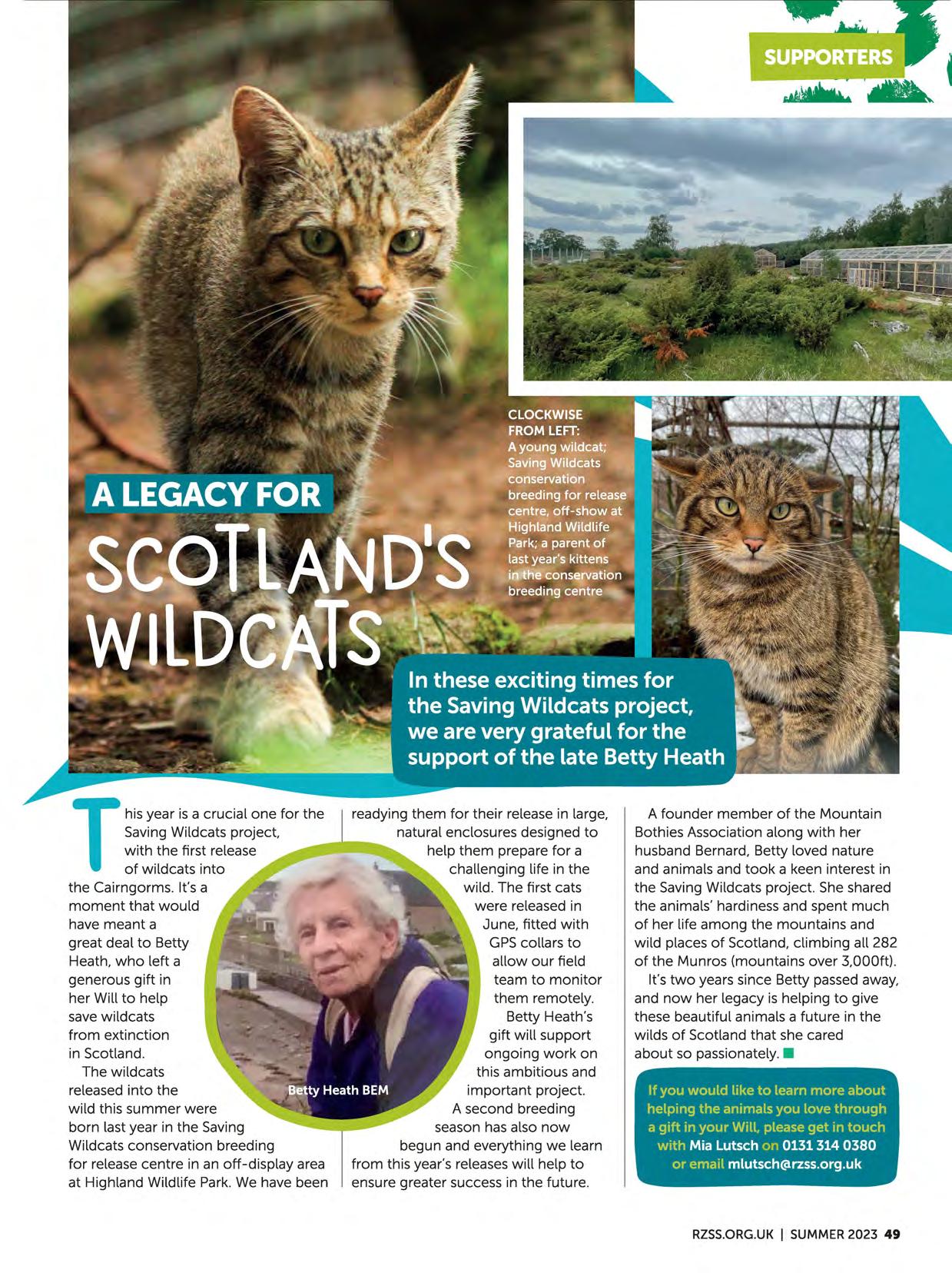
The wildcats released into the wild this summer were born last year in the Saving Wildcats conservation breeding for release centre in an off-display area at Highland Wildlife Park. We have been
readying them for their release in large, natural enclosures designed to help them prepare for a challenging life in the wild. The first cats were released in
June, fitted with GPS collars to allow our field team to monitor them remotely.
Betty Heath's gift will support ongoing work on this ambitious and important project.
A second breeding season has also now begun and everything we learn from this year's releases will help to ensure greater success in the future.
A founder member of the Mountain Bothies Association along with her husband Bernard, Betty loved nature and animals and took a keen interest in the Saving Wildcats project. She shared the animals' hardiness and spent much of her life among the mountains and wild places of Scotland, climbing all 282 of the Munros (mountains over 3,000ft).
It's two years since Betty passed away, and now her legacy is helping to give these beautiful animals a future in the wilds of Scotland that she cared about so passionately.
If you would like to learn more about helping the animals you love through a gift in your Will, please get in touch with Mia Lutsch on 0131314 0380 or email mlutsch@rzss.org.uk
Above: Dark bordered beauty moths
Below: Dark bordered beauty caterpillar close up
Below right: Adam Button
Iknew when I started working last year as an experienced invertebrate keeper with the conservation team, based at Highland Wildlife Park, that the job would be exciting. It took me by surprise just how much was going on when I arrived at the very start of RZSS'sfirst dark bordered beauty moth conservation breeding programme. The day before, the first moth caterpillar had hatched and I was immediately immersed in the first large-scale breeding attempt for the species, which is rare in the UK.
I was brought in to look after breeding on a project whose purpose is to breed enough of the moths to be able to release them into new, suitable habitats. At the moment there are only three populations of the species in Britain. The dark bordered beauty moths in Scotland rely on aspen and their population is fragmented, so habitat management is needed, supported by our conservation breeding programme.
There wasn't an awful lot known about the moths when we started, so we were trying to learn as much as we could from our breeding programme to better understand the species and work out the best management strategy.
EThe reason I love invertebrates is because we are learning all the time. It's new and exciting, but it can be a real challenge when you know very little about a species.
We were busy setting up little enclosures for the caterpillars and providing them with food. We had to keep an eye on each of the individuals, watching how quickly they were growing, making sure they were all
accounted for every day and that they were eating.
As time went on, we were looking for when they were ready to pupate.
Last year we had 36 caterpillars, small numbers but we were watching every individual closely to keep track of them. They were very precious. Trying to find a little green caterpillar, even in a small enclosure, is tricky. They're only caterpillars for three to four weeks, so it was a quick process. Some were growing two or three millimetres a day.
Last year was the first breeding cycle; we brought them through to pupation and then to adults. We reared 29 adult moths who ended up producing over 400 fertile eggs, which was a fantastic result. We're now gearing up for our second breeding season and if all goes well we'll be working on releasing caterpillars to a new site this summer.
This work is all part of our partnership with the other members of Rare Invertebrates in the Cairngorms: Butterfly Conservation Scotland, RSPB,Cairngorms National Park Authority, Buglife Scotland and NatureScot.
Working on this project has been a fantastic opportunity to get to know people from different organisations, all dedicated to saving dark bordered beauty moths and other important invertebrates in
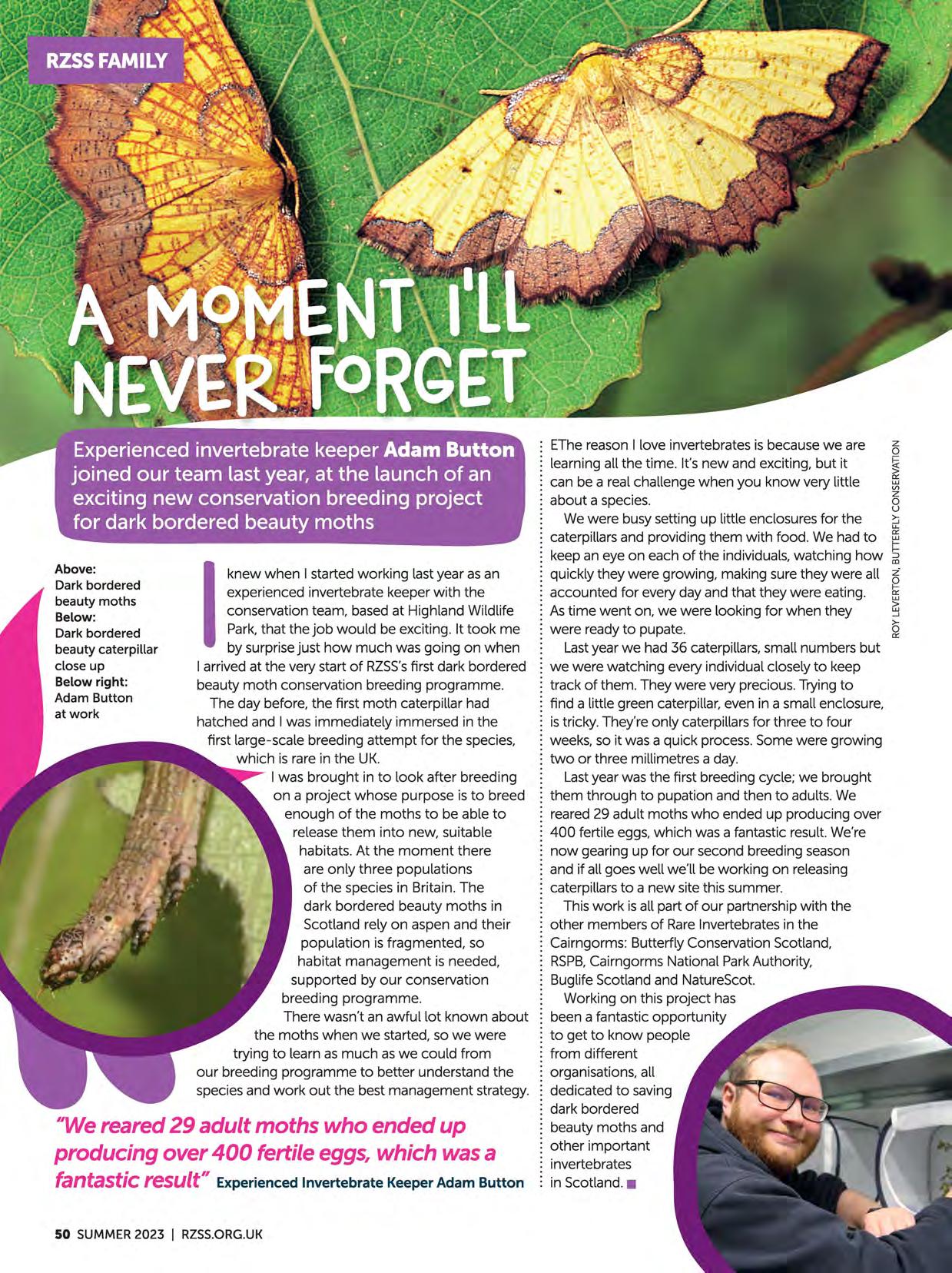
1 We reared 29 adult moths who ended up producing over 400 fertile eggsl which was a fantastic result" Experienced Invertebrate Keeper Adam Button
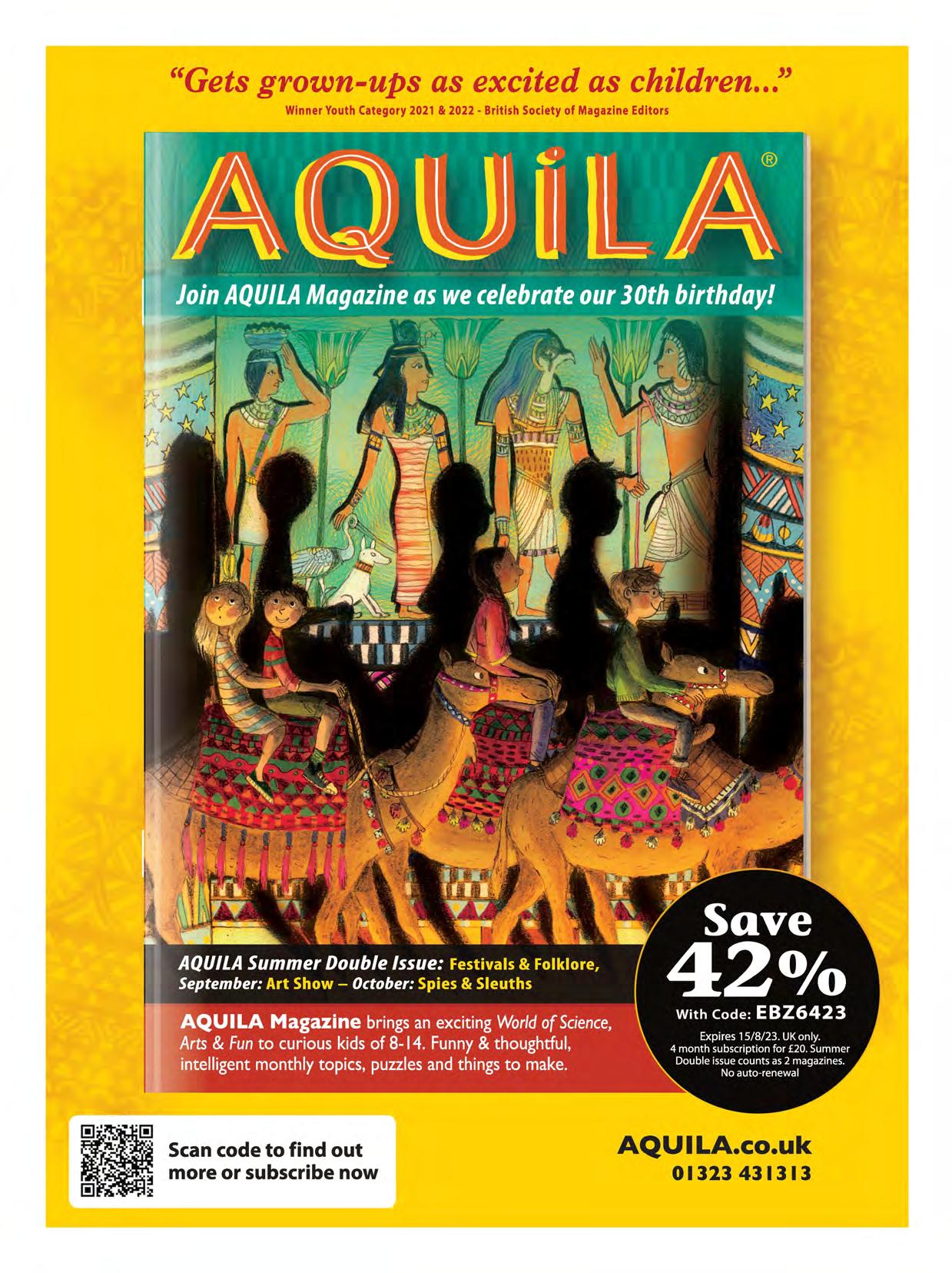
Explore 5 decks from State Apartments to Crew's Quarters
 Step aboard
Queen Elizabeth ll's former floating palace
Step aboard
Queen Elizabeth ll's former floating palace